
Mars is the fourth planet from the Sun, and the seventh largest. It’s the only planet we know of inhabited entirely by robots.

All About Mars

Small World
Mars is 53% smaller than Earth.
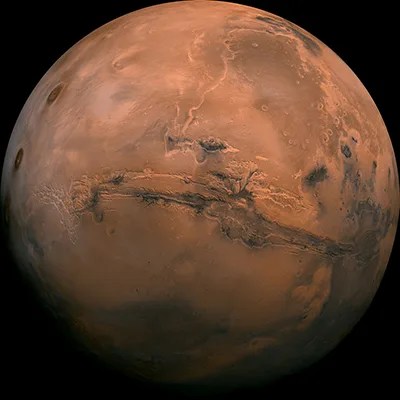
Fourth Rock
Mars is 1.52 AU from the Sun. Earth = 1.
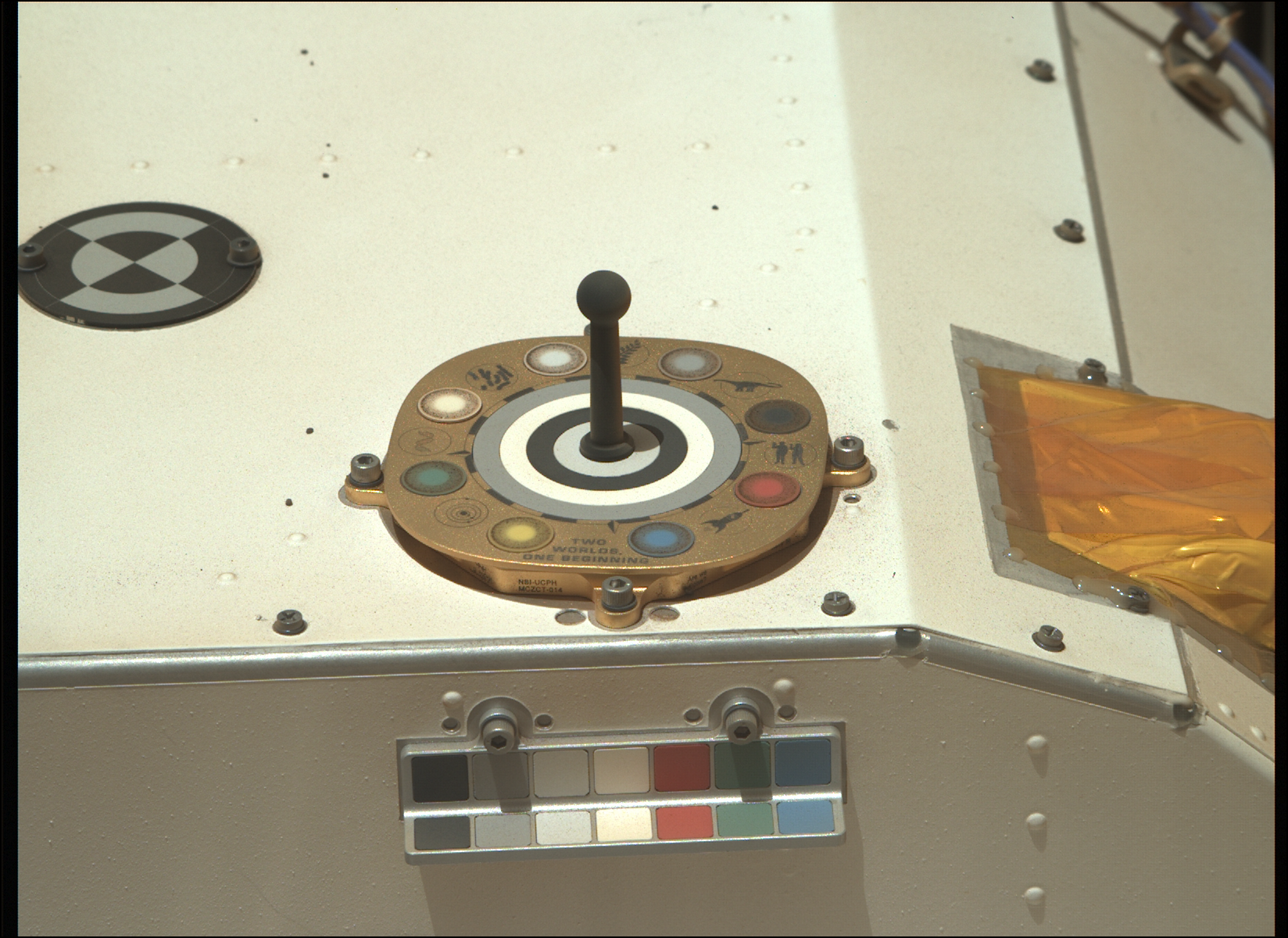
A Martian day is a little longer than Earth's; a Mars year is almost two Earth years.
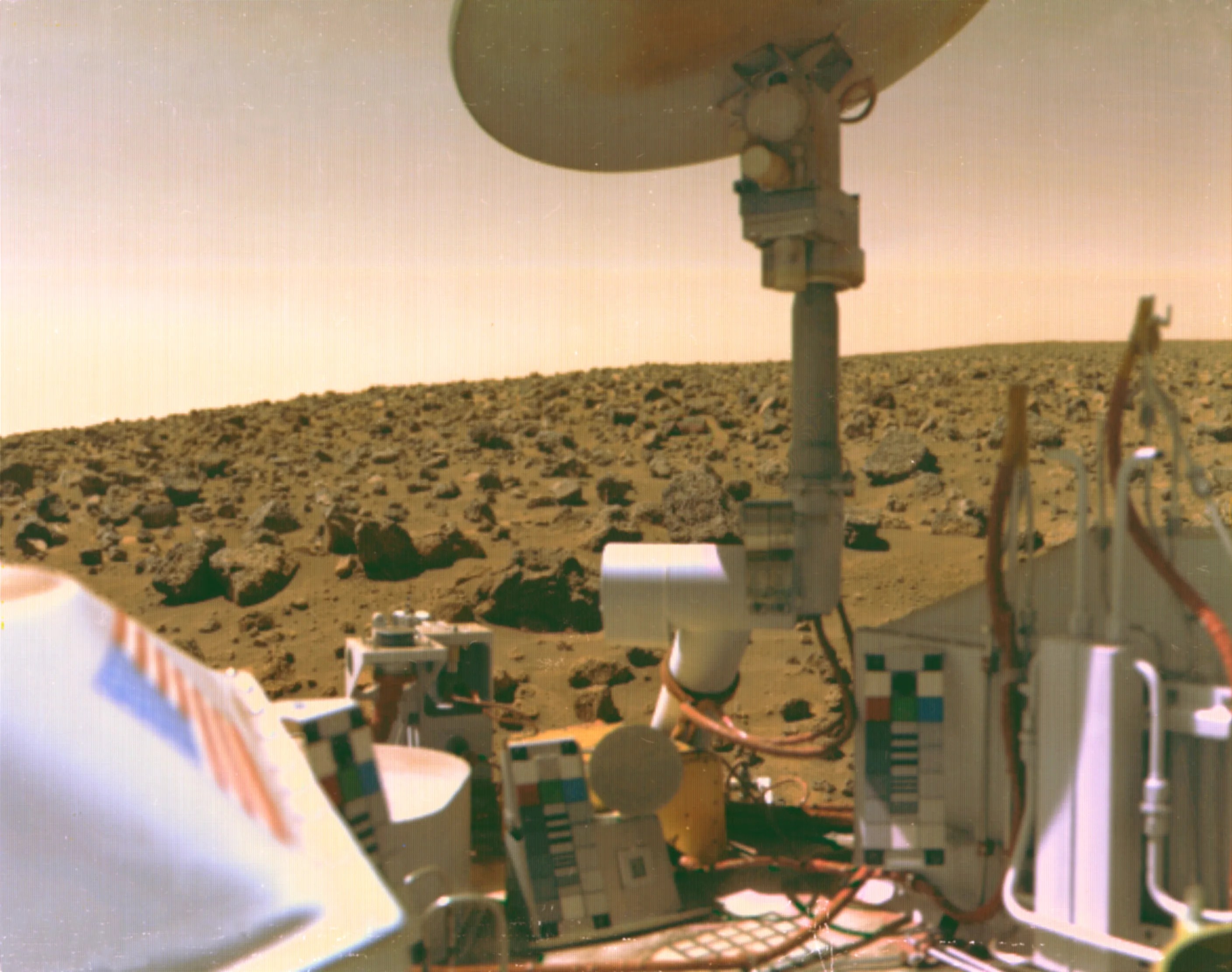
Rocky Planet
Mars' surface has been altered by volcanoes, impacts, winds, and crustal movement.
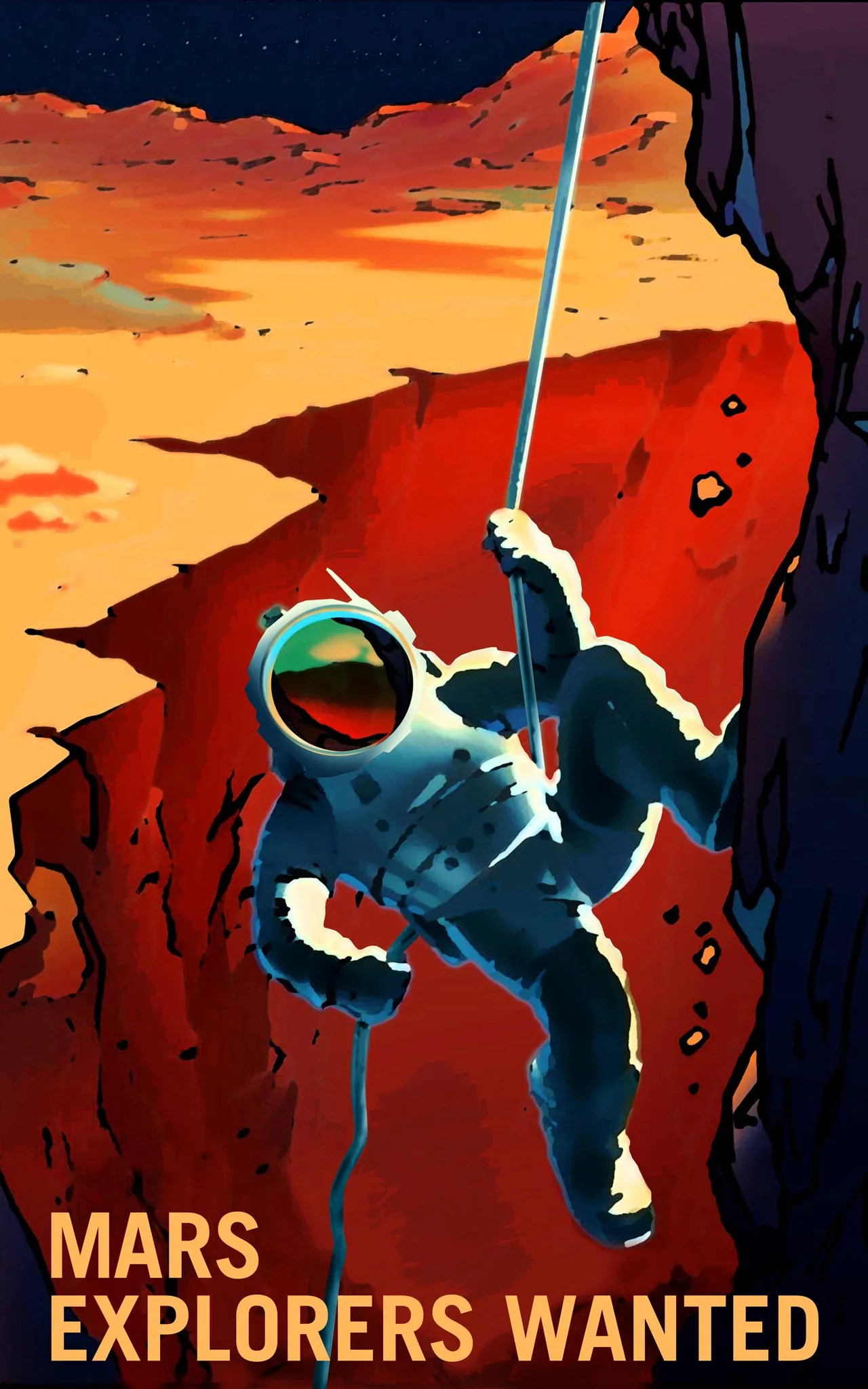
Bring a Spacesuit
Mars' atmosphere is mostly carbon dioxide, argon, and nitrogen.
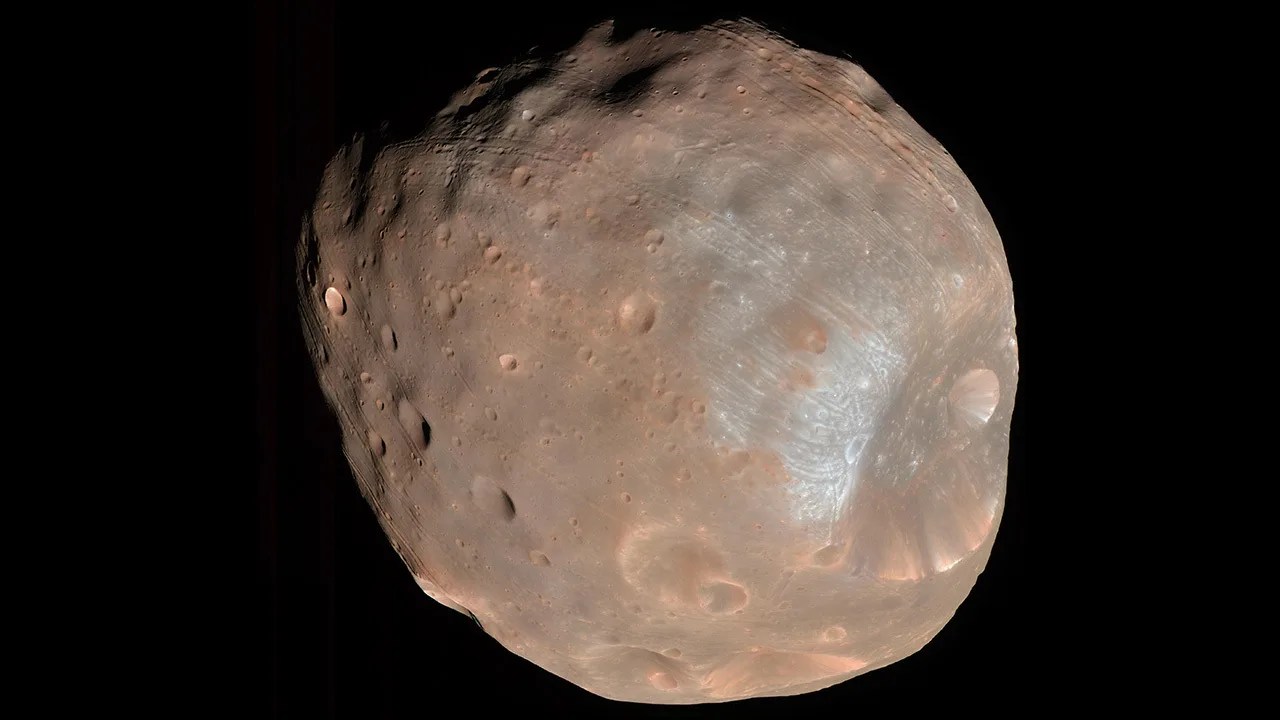
Phobos and Deimos are small compared to the planet.
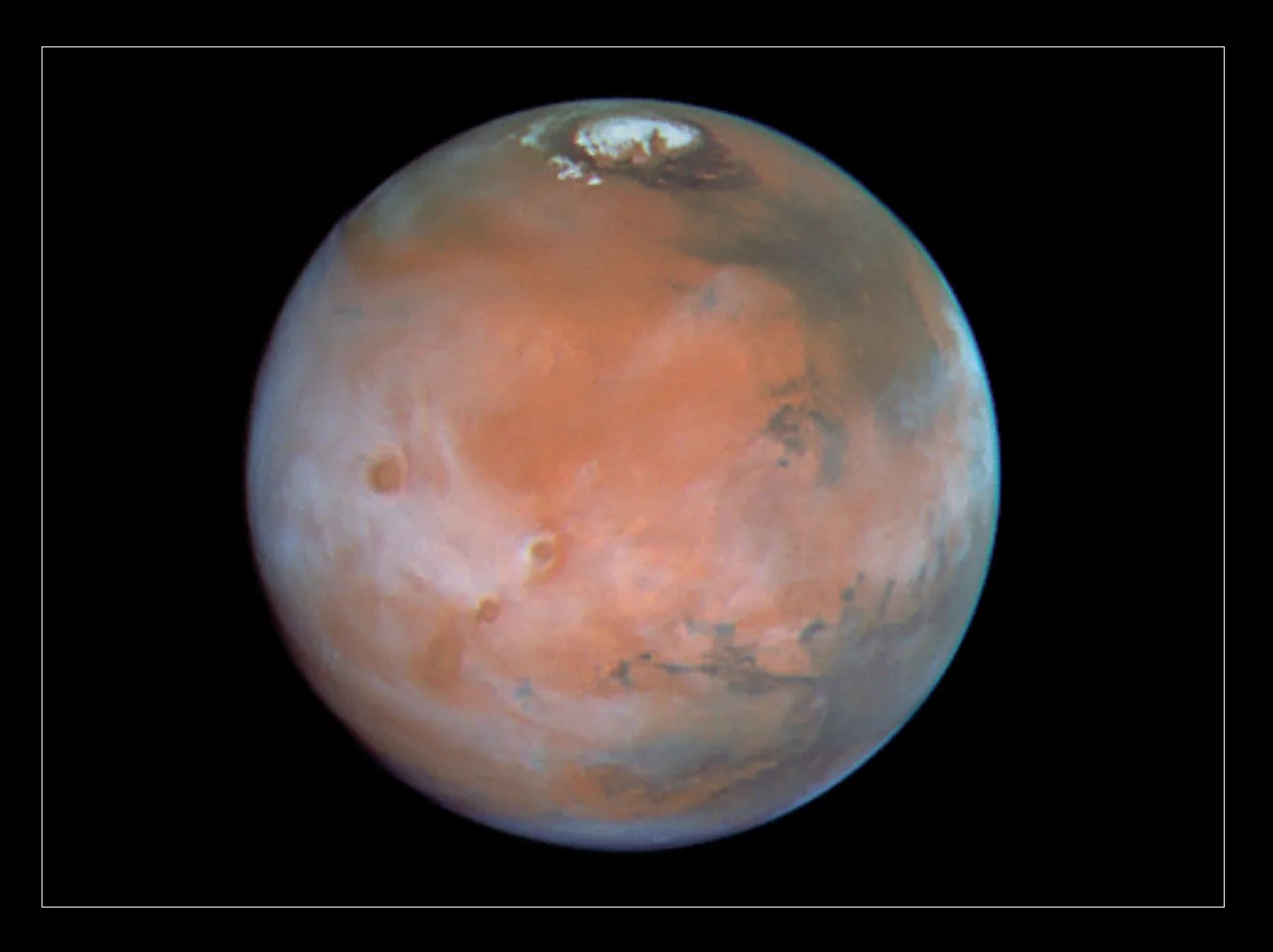
Mars has no rings.
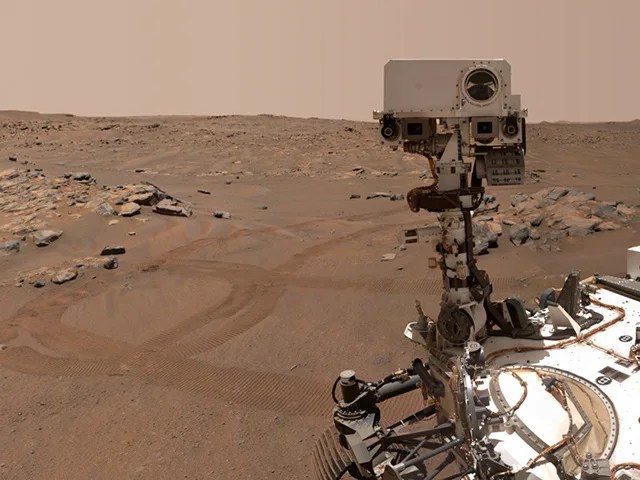
Many Missions
The first success was NASA's Mariner 4 flyby in 1965,

The Search for Life
Missions are determining Mars' past and future potential for life.
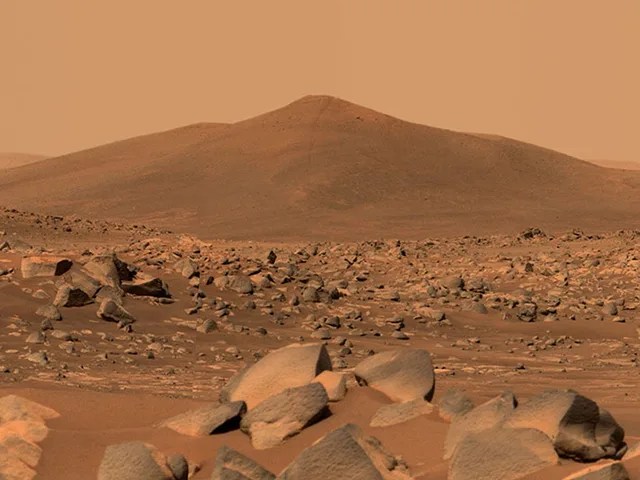
The Red Planet
Iron minerals in the Martian soil oxidize, or rust, causing the soil and atmosphere to look red.
Mars Overview
Mars is no place for the faint-hearted. It’s dry, rocky, and bitter cold. The fourth planet from the Sun, Mars, is one of Earth's two closest planetary neighbors (Venus is the other). Mars is one of the easiest planets to spot in the night sky – it looks like a bright red point of light.
Despite being inhospitable to humans, robotic explorers – like NASA's Perseverance rover – are serving as pathfinders to eventually get humans to the surface of the Red Planet.
Why Do We Go?
Mars is one of the most explored bodies in our solar system, and it's the only planet where we've sent rovers to explore the alien landscape. NASA missions have found lots of evidence that Mars was much wetter and warmer, with a thicker atmosphere, billions of years ago.
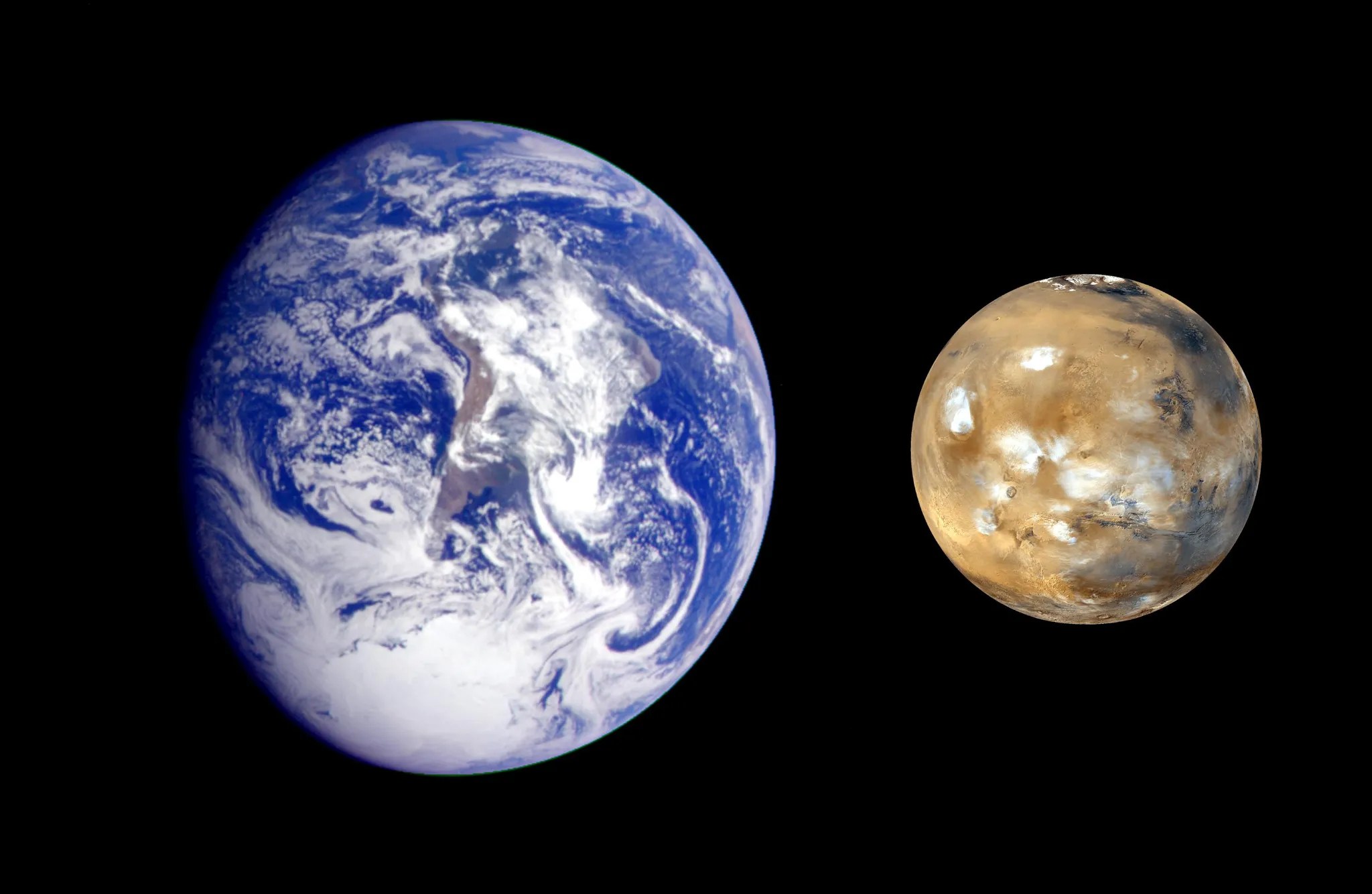
Eyes on the Solar System
How we explore.
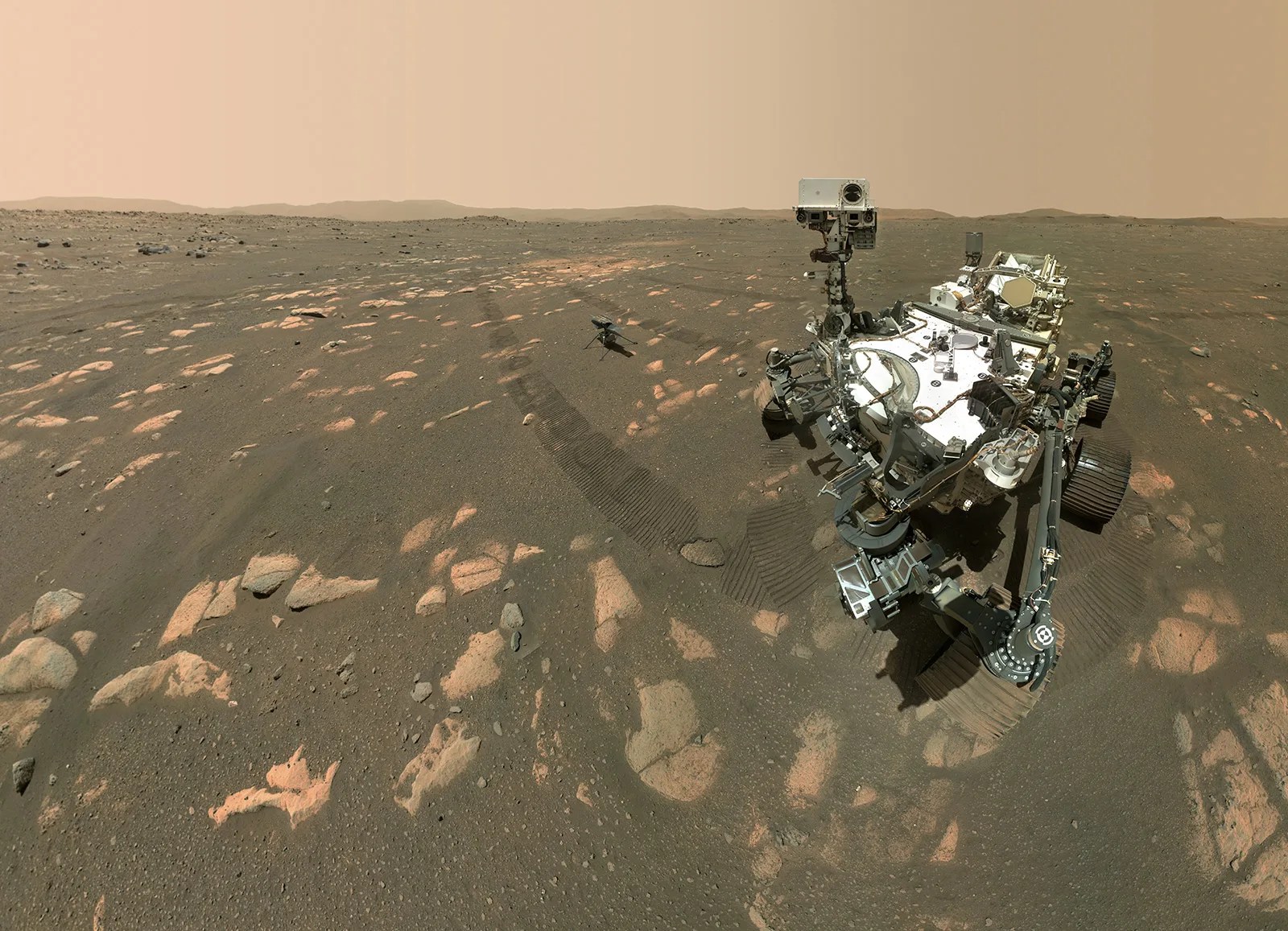
Mars 2020: Perseverance Rover
The Mars 2020 mission Perseverance rover is the first step of a proposed roundtrip journey to return Mars samples to Earth.
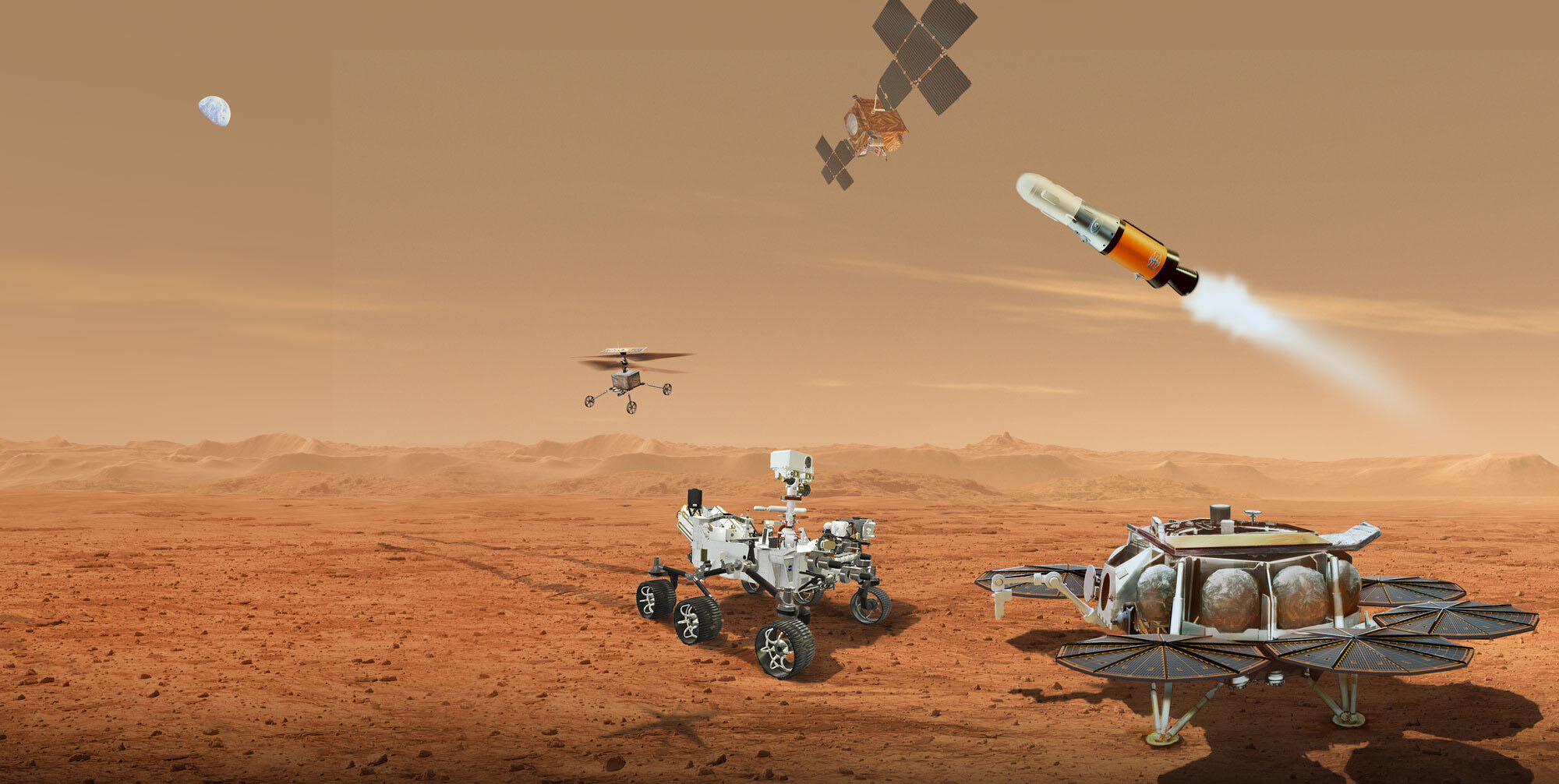
Mars Sample Return
NASA and ESA (European Space Agency) are planning ways to bring the first samples of Mars material back to Earth for detailed study.
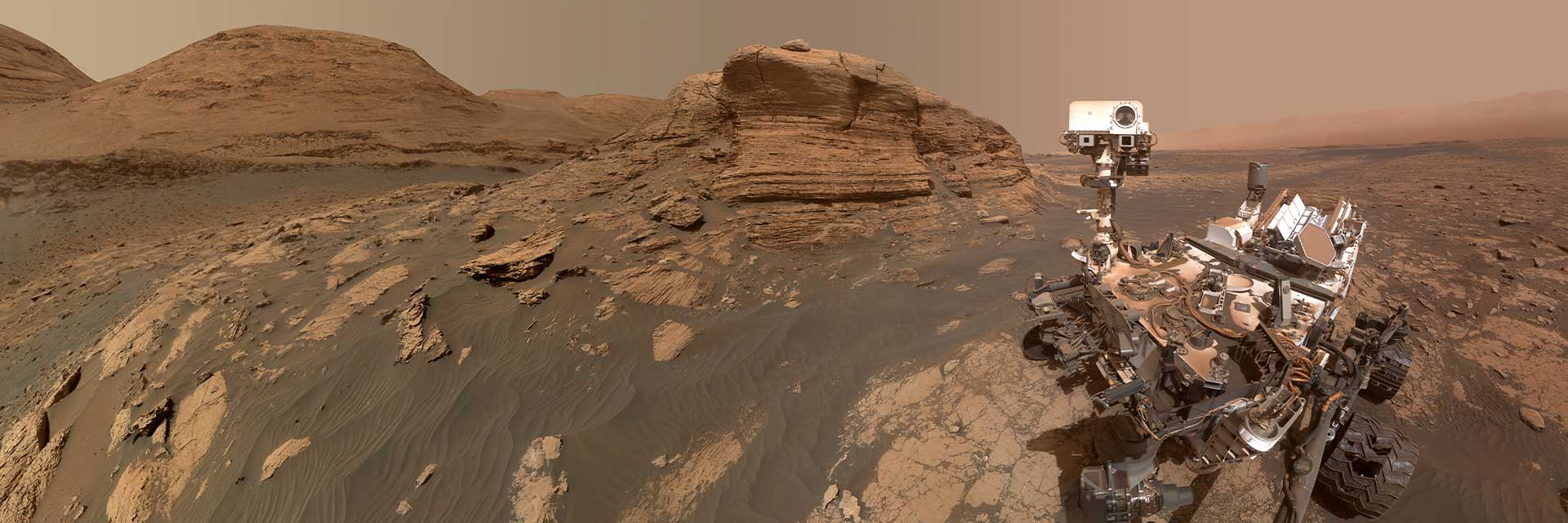
Mars Curiosity Rover (Mars Science Laboratory)
Curiosity is investigating Mars to determine whether the Red Planet was ever habitable to microbial life.
Mars Resources
View the one-stop shop for all Mars iconic images, videos, and more!
News & Features
Sols 4166-4167: A Garden Full of Rocks

Sols 4164-4165: What’s Around the Ridge-bend?

Sols 4161-4163: Double Contact Science

Why is Methane Seeping on Mars? NASA Scientists Have New Ideas

Sols 4159-4160: A Fully Loaded First Sol
Beyond the Moon
Humans to mars.
Like the Moon, Mars is a rich destination for scientific discovery and a driver of technologies that will enable humans to travel and explore far from Earth.
Mars remains our horizon goal for human exploration because it is one of the only other places we know in the solar system where life may have existed. What we learn about the Red Planet will tell us more about our Earth’s past and future, and may help answer whether life exists beyond our home planet.
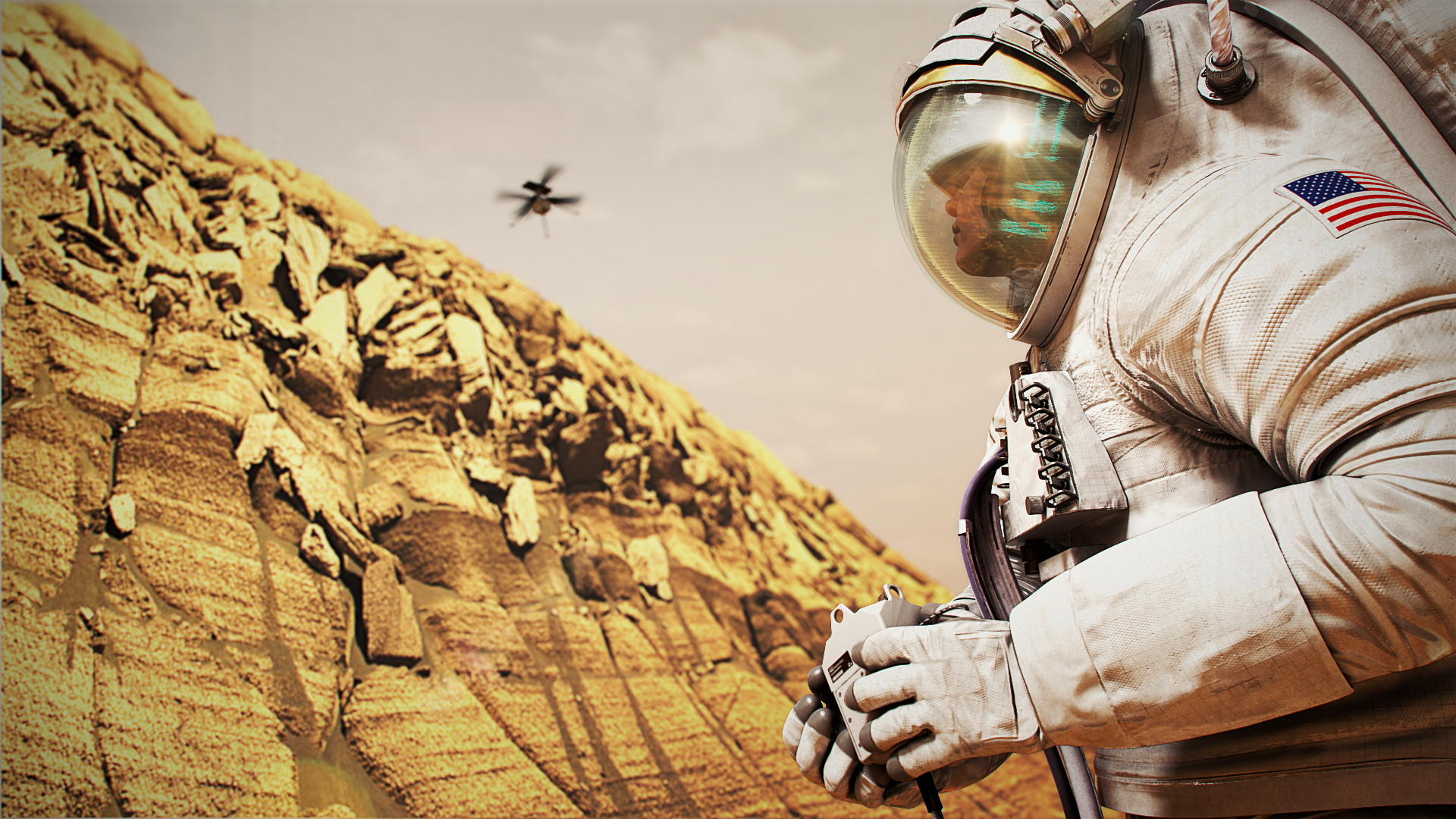
Discover More Topics From NASA

Mars is the fourth planet from the Sun – a dusty, cold, desert world with a very thin atmosphere. Mars is also a dynamic planet with seasons, polar ice caps, canyons, extinct volcanoes, and evidence that it was even more active in the past.
Mars is one of the most explored bodies in our solar system, and it's the only planet where we've sent rovers to roam the alien landscape.
NASA currently has two rovers ( Curiosity and Perseverance ), one lander ( InSight ), and one helicopter ( Ingenuity ) exploring the surface of Mars.
Perseverance rover – the largest, most advanced rover NASA has sent to another world – touched down on Mars on Feb. 18, 2021, after a 203-day journey traversing 293 million miles (472 million kilometers). The Ingenuity helicopter rode to Mars attached to the belly of Perseverance.
Perseverance is one of three spacecraft that arrived at Mars in 2021. The Hope orbiter from the United Arab Emirates arrived on Feb. 9, 2021. China’s Tianwen-1 mission arrived on Feb. 10, 2021, and includes an orbiter, a lander, and a rover. Europe and India also have spacecraft studying Mars from orbit.
In May 2021, China became the second nation to ever land successfully on Mars when its Zhurong Mars rover touched down.
An international fleet of eight orbiters is studying the Red Planet from above including three NASA orbiters: 2001 Mars Odyssey , Mars Reconnaissance Orbiter , and MAVEN .
These robotic explorers have found lots of evidence that Mars was much wetter and warmer, with a thicker atmosphere, billions of years ago.
Pop Culture
No other planet has captured our collective imagination quite like Mars.
In the late 1800s when people first observed the canal-like features on Mars' surface, many speculated that an intelligent alien species resided there. This led to numerous stories about Martians, some of whom invade Earth, like in the 1938 radio drama, "The War of the Worlds ." According to an enduring urban legend, many listeners believed the story to be real news coverage of an invasion, causing widespread panic.
Countless stories since have taken place on Mars or explored the possibilities of its Martian inhabitants. Movies like "Total Recall" (1990 and 2012) take us to a terraformed Mars and a struggling colony running out of air. A Martian colony and Earth have a prickly relationship in "The Expanse " television series and novels.
And in the 2014 novel and its 2015 movie adaptation, "The Martian," botanist Mark Watney is stranded alone on the planet and struggles to survive until a rescue mission can retrieve him.
- NASA’s Mars Exploration Program
- NASA: Moon to Mars
- For Kids: About Mars

- DIGITAL MAGAZINE
MOST POPULAR
Facts about Mars
How much do you know about the red planet.
Calling all budding young space cadets! Join us on an out-of-this-world adventure with our fascinating facts about Mars…
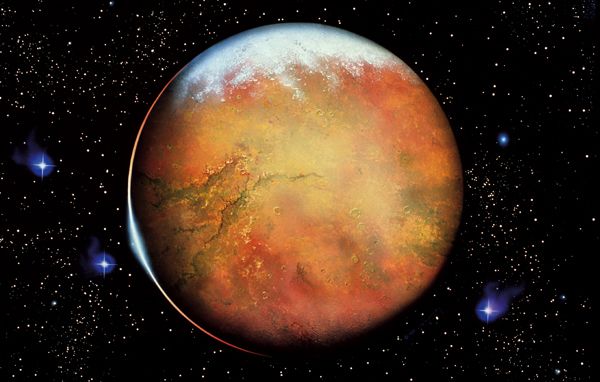
1) Named after the Roman God of war , Mars is the fourth planet from the sun in our solar system .
2) Mars is also known as the ‘ Red Planet ’ because, well, it’s red! This signature colour comes from the large amount of a chemical called iron oxide (or ‘rust’ as you might know it) in its rocks and soil.

3) Mars is the second smallest planet in the solar system after Mercury . With a diameter (distance through the middle) of 6,791 kilometres , it’s roughly half the size of Earth .
4) It can get pretty cold on Mars –– much colder than our own planet , since it’s further away from the sun. At the equator, temperatures can reach 20°C , but at its poles they can plummet to as low as -140°C . Brr !
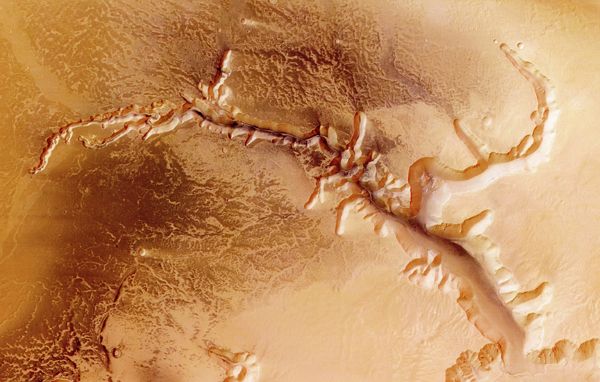
5) Mars is home to the highest mountain in our solar system –– a volcano called Olympus Mons . Standing a whopping 24 kilometres high , it’s about three times the height of Mount Everest!
Did you know…? There are bits of Mars here on Earth! In the past, asteroids hit the Red Planet, sending debris into space. Some of this debris landed on our planet as meteorites.
6) You could jump around three times higher on Mars than you can on Earth. Boing ! This is because the planet’s gravity – the force that keeps us on the ground – is much weaker.

7) Do you like to look at the moon at night? Well, check this out –– Mars has two moons ! One is called Phobos and the other Deimos .
8) A day on Mars is 24 hours and 37 minutes –– only a little bit longer than a day on our own planet. A year on Mars, however, is almost twice as long, lasting 687 Earth days ! This is because it takes a lot longer than Earth to complete its orbit around the Sun.
Did you know that we have a FREE downloadable Mars primary resource ? Great for teachers, homeschoolers and parents alike!
9) Until recently, scientists believed that there was no liquid water on the surface of Mars –– only rocks, soil dust and ice. But… News flash! In 2018, they found evidence of a lake under the planet’s south polar ice cap. Exciting stuff!
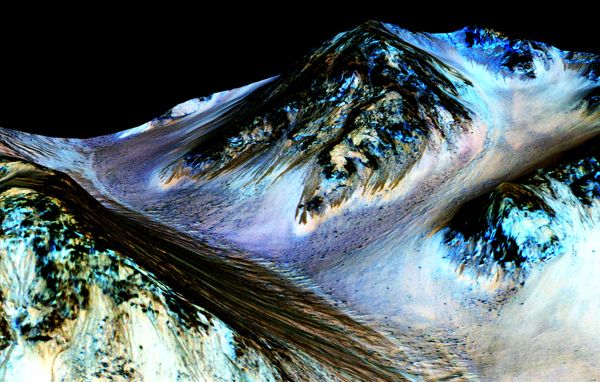
10) Humans have not yet been to Mars, but scientists have sent spacecraft there to help them research this fascinating planet. The first spacecraft to land on Mars were the Viking Landers , which touched down on the surface in 1976 .
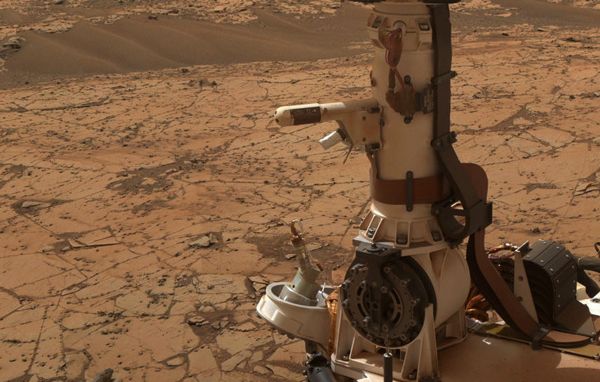
Want to learn more? Check out our facts about Earth , discover top Moon facts and learn about world-famous astronaut Neil Armstrong .
What did you think of our facts about Mars? Leave a comment below and let us know!
Leave a comment.
Your comment will be checked and approved shortly.
WELL DONE, YOUR COMMENT HAS BEEN ADDED!
I'm doing a project and it really helps
this is for school and its helping me lot!
I love Mars so much
this website is amazing good gob keep up the work.
I love Mars!
I have never been on mars
THANK YOU! HELPS SOOOOO MUCH!
this is amazing
this helped a lot with my presentation
This helped me a lot!
This is just AWESOME!
WOW!!!!!!!!!!!!!!!!!!!!!!!!!!!!!!!!!!!!!!!!!!!!
this is so cool
this was very usefull
These facts really helped me for my school work
hi this is an amazing website
These facts were useful for my space project. I chose to do it about Mars!
Great you helped me do my homework!!
ive got really great infomation of this
good to know
lets take action
Educational
Interesting
thank you this was amazing
That's so cool
the facts are amaizing
super awesome
this is really helpful!!
Woooooooooooooooooooooooooooooooooooooooooooooooooooooooooooooooooooooooooooooooooooooooooooooooooooooooooow
I'm a girrafe
... [Trackback] [...] Informations on that Topic: natgeokids.com/uk/discover/science/space/facts-about-mars/ [...]
Not bad not bad
Cool it teach us a lot of astronomy about mars
great site, loved the facts, recommend it
could youse more facts
Best avatar
thanks for the wonderful info
I love mars
Mars is so cool!
love it thankyou
i like this
Never realised Mars is smaller than earth. I thought it was just smaller than Jupiter
what is so cool about MARS lol .
So interesting!!
CUSTOMIZE YOUR AVATAR
More like space.

Universe Facts

Neil Armstrong facts!

Space Junk!

The Phases of the Moon

Sign up to our newsletter
Get uplifting news, exclusive offers, inspiring stories and activities to help you and your family explore and learn delivered straight to your inbox.
You will receive our UK newsletter. Change region
WHERE DO YOU LIVE?
COUNTRY * Australia Ireland New Zealand United Kingdom Other
By entering your email address you agree to our Terms of Use and Privacy Policy and will receive emails from us about news, offers, activities and partner offers.
You're all signed up! Back to subscription site
Type whatever you want to search
More Results

You’re leaving natgeokids.com to visit another website!
Ask a parent or guardian to check it out first and remember to stay safe online.

You're leaving our kids' pages to visit a page for grown-ups!
Be sure to check if your parent or guardian is okay with this first.

All About Mars

Mars’ atmosphere has clouds and wind just like Earth. Sometimes the wind blows the red dust into a dust storm. Spiraling dust storms–called dust devils–can look like tornadoes. Mars’ large storms sometimes cover the entire planet. Credit: NASA/JPL-Caltech
Mars is a cold desert world. The average temperature on Mars is minus 85 degrees Fahrenheit – way below freezing. It is half the size of Earth. Mars is sometimes called the Red Planet. It's red because of rusty iron in the ground.
Like Earth, Mars has seasons, polar ice caps, volcanoes, canyons, and weather. It has a very thin atmosphere made mostly of carbon dioxide, nitrogen, and argon. People would not be able to breathe the air on Mars.
Explore Mars! Click and drag to rotate the planet. Scroll or pinch to zoom in and out. Credit: NASA Visualization Technology Applications and Development (VTAD)
There are signs of ancient floods on Mars, but now water mostly exists in icy dirt and thin clouds. On some Martian hillsides, there is evidence of liquid salty water in the ground.
Scientists want to know if Mars may have had living things in the past. They also want to know if Mars could support life now or in the future.

Credit: NASA/JPL-Caltech
Structure and Surface
- Mars is a terrestrial planet. It is small and rocky.
- Mars has a thin atmosphere.
- Mars has an active atmosphere, but the surface of the planet is not active. Its volcanoes are dead.
Time on Mars
- One day on Mars lasts 24.6 hours. It is just a little longer than a day on Earth.
- One year on Mars is 687 Earth days. It is almost twice as long as one year on Earth.
Mars’ Neighbors
- Mars has two moons. Their names are Phobos and Deimos.
- Mars is the fourth planet from the Sun. That means Earth and Jupiter are Mars’ neighboring planets.
Quick History
- Mars has been known since ancient times because it can be seen without advanced telescopes.
- There was even a flying helicopter on Mars. Seriously! The Mars Helicopter, Ingenuity , successfully tested powered, controlled flight on another world for the first time. It hitched a ride to Mars on the Perseverance rover and worked with the rover to explore Mars. Ingenuity was designed as a tech demo expected to fly no more than five times over 30 days. It ended its mission in early 2024 having completed 72 flights in just under three years. Thanks Ingenuity!
- Several missions have orbited, landed on, or roved around on Mars: InSight , MAVEN , Mars Reconnaissance Orbiter , and many more ! Mars is the only planet we have sent rovers to. They drive around Mars, taking pictures and measurements. Learn more about them and what they have discovered by clicking the pictures below!
Mars Rovers
Perseverance
Spirit and Opportunity
What does Mars look like?

This infographic uses composite orbiter images and an outline of the United States to show the scale of the Valles Marineris (a canyon system more than 2,000 miles long!). Swipe left and right to see how big this canyon system is compared to the United States. Credit: NASA/JPL-Caltech
This animated GIF was created using footage taken by NASA’s Ingenuity Mars Helicopter during its 25th flight on April 8, 2022. Credit: NASA/JPL-Caltech
This animated image blinks two versions of a May 11, 2016, selfie of NASA's Curiosity Mars rover at a drilled sample site called "Okoruso." In one version, cameras atop the rover's mast face the arm-mounted camera taking the portrait. In the other, they face away. Credit: NASA/JPL-Caltech/MSSS

NASA's Curiosity Mars rover used its black-and-white navigation cameras to capture panoramas at two times of day on April 8, 2023. Credit: NASA/JPL-Caltech
Explore Mars!
Mars Activities
Make a Mask
Coloring Pages
Scavenger Hunt
For more information visit:
NASA's Mars Exploration Program
Planet Mars Overview
Explore with Perseverance!
Explore the Solar System

If you liked this, you may like:
Mars: Facts About the Red Planet

The red planet Mars has been known to humans since ancient times. It has been the target of dozens of space missions and will hopefully soon become the first planet astronauts will land on. In this article, we’ll tell you everything you need to know about Mars and answer the most common questions related to the Red Planet. Let’s get started!
Is Mars bigger than the Earth?
How long is a year on mars, how long is a day on mars, does mars have seasons, how far is mars from the sun, how far is mars from the earth, how long does it take to get to mars, missions to mars, how was mars formed, mars structure, mars surface, mars atmosphere, how many moons does mars have, april 29: mars-neptune, may 5: mars next to the moon; lunar occultation of mars, july 15: mars-uranus, august 14: mars-jupiter, what is the gravity on mars, what color is mars, what is the temperature on mars, how many rovers are on mars, fun facts about mars.
- Planet type : terrestrial
- Radius : 3,396 km
- Mass : 6.417 × 10^23 kg
- Aphelion : 249.2 million km (154.9 million miles)
- Perihelion : 206.6 million km (128.4 million miles)
- Average distance from the Earth : 225 million km (140 million miles)
- Surface temperature : −143 °C to 35 °C (-226 °F to 95 °F)
- Solar day length : 24 h 39 m 35 s
- Sidereal day length : 24 h 37 m 22 s
- Year length : 686.98 Earth days
- Age : 4.503 billion years
- Named after : Roman god of war
How big is Mars?
Mars is the second smallest planet in the Solar System – only Mercury is smaller. Let’s measure this planet and compare it to the Earth.
Mars has a diameter of 6,792 km (4,220 miles); the planet’s circumference around the equator is 21,326 km (13,300 miles). Thus, if you’re moving at a speed of about 100 km per hour (62 miles per hour), it will take you about nine days to travel around the planet's equator.
No, it’s not. The diameter of Mars is only about half of the Earth’s diameter, which is 12,742 km (7,917 miles). Also, Mars is only about two times bigger than our Moon, which is 3,474 km (2,158 miles) in diameter.
Mars orbital period and rotation period
Every planet in the Solar System has its own orbital period (that determines the length of year) and rotation period (that determines the length of a day-night cycle). Let’s take a look at how fast Mars revolves around the Sun and spins on its axis.
As Mars is located farther away from the Sun than the Earth, it takes longer for the Red Planet to complete one orbit around the Sun. A year on Mars lasts for about 687 Earth days , which equals 1.88 Earth years.
Mars rotates on its axis at almost the same speed as the Earth. For this reason, daily cycles on these two planets are quite similar. One Martian day (called a sol) lasts 24 hours 39 minutes , which is only 39 minutes longer than a day on the Earth.
As you probably know, seasons are caused by the tilt of a planet’s axis of rotation. Mars’ axial tilt is very similar to the Earth’s: the Red Planet is tilted at 25.2°, while the Earth's axial tilt is about 23.5°. For this reason, Mars has four distinct seasons: spring, summer, fall, and winter . However, each season on Mars lasts about two times longer than on the Earth. That’s because it takes almost two Earth years for Mars to travel around the Sun once.
How far away is Mars?
Mars is the fourth planet from the Sun and one of the Earth’s two closest neighbors (the other one being Venus).
Due to the high eccentricity of the Red Planet’s orbit, there’s a significant difference between Mars’ closest and farthest points from the Sun, which equal 206.6 million km (128.4 million miles) and 249.2 million km (154.9 million miles), respectively. On average, Mars is positioned 228 million km (142 million miles) away from our star, which equals 1.5 astronomical units.
The distance between Mars and our planet is constantly changing. The farthest distance between Mars and the Earth equals 401 million km (249 million miles). The closest distance the two planets can get to each other is 54.6 million km (33.9 million miles). However, such a close approach never happened in recorded history. The closest approach between Mars and the Earth in almost 60,000 years occurred in 2003 when the two celestial bodies were 55.7 million km (34.6 million miles) away from each other.
The duration of a trip to Mars depends on when it is taken. The best time to launch a spaceship to Mars is about three months before the Red Planet gets closest to the Earth. Such a moment happens about every two years, around Mars’ opposition. According to NASA , an average trip to Mars takes about nine months .
The two fastest trips to Mars were taken by Mariner 6 (five months) and Mariner 7 (four months). However, these two spacecraft performed flybys of Mars and so didn’t need to slow down as orbiters, landers, and rovers do. The latest rover to land on Mars – Perseverance – reached the planet in about seven months .
As the Earth’s close neighbor, Mars has been the destination of numerous space missions. Since 1960, about 50 missions have been sent to the Red Planet, though only about half of them have been successful. Let’s take a look at the most significant ones.
NASA’s Mariner 9 entered Mars’ orbit in 1971, becoming the first spacecraft to orbit another planet. Mariner 9 mapped 85% of the Martian surface and sent more than 7,000 images back to the Earth.
The first human-made object to reach the Martian surface was the Soviet Union’s Mars 2 , launched the same year as Mariner 9. Unfortunately, the speed at which Mars 2 approached the planet was too high; as a result, the descent system malfunctioned, and the spacecraft crashed into the Red Planet’s surface.
The first spacecraft to successfully land on Mars was NASA’s Viking 1 . This spacecraft operated on the planet from 1976 to 1982 and sent back more than 57,000 images.
NASA’s Sojourner , which arrived on Mars in 1997 as part of the Pathfinder mission, became the first rover to operate on another planet. The Sojourner rover operated for 83 sols, making scientific measurements and taking pictures.
NASA’s twin rovers Spirit and Opportunity reached the Red Planet in 2004. The rovers were tasked with studying the planet’s climatic history and looking for evidence of past water activity. Originally, the mission was planned to last 90 days. However, both rovers exceeded their planned mission lifetimes by many years: Spirit operated until 2010, and Opportunity stopped working only in 2018.
In 2012, NASA’s rover Curiosity arrived at the Gale crater on Mars. The rover investigated the Martian climate and geology and found out that the planet once had conditions favorable for microbial life. Curiosity has been active on Mars for more than three thousand sols; as of 2021, the rover is still operational.
In 2021, China successfully landed its first spacecraft on Mars as part of the Tianwen-1 mission. The rover named Zhurong became the first spacecraft not launched by NASA to operate on Mars.
Also in 2021, NASA’s Perseverance rover landed on the Red Planet. Apart from the rover, a helicopter called Ingenuity also takes part in the mission. On April 19, 2021, Ingenuity performed the first-ever powered, controlled flight on another planet.
What is Mars made of?
Like the other three terrestrial planets (Mercury, Venus, and the Earth), Mars is a rocky celestial body. Let’s take a closer look at the planet’s physical peculiarities.
Mars formed together with the other Solar System planets. About 4.5 billion years ago, a giant cloud of interstellar gas and dust collapsed under its own gravity and flattened into a protoplanetary disk. Mars and the other rocky planets formed in the inner part of this disk, while the gas giants settled in the outer regions of the young Solar System.
Mars has a central core, a mantle, and a crust. The Red Planet’s core is made of iron, nickel, and sulfur. It is surrounded by a rocky mantle and a crust made of iron, magnesium, aluminum, calcium, and potassium.
Mars' surface is primarily composed of basalt. The prevalence of iron oxide in the Martian soil gives the planet its distinct red color.
The Red Planet has many surface features similar to our planet: valleys, deserts, mountains, and polar ice caps. There are even former river deltas that suggest that Mars was a watery planet in the past.
The atmosphere of Mars is much thinner than the Earth’s. It is composed primarily of carbon dioxide (95%), while our planet’s atmosphere is rich in nitrogen and oxygen. Thus, humans would not be able to breathe on Mars.
However, in April 2021, NASA’s rover Perseverance successfully converted a small portion of the Martian atmosphere into oxygen . In the future, this technology might be able to provide astronauts with breathable air.
Mars has two moons: Phobos and Deimos . Both of them were discovered by American astronomer Asaph Hall in 1877. The moons of Mars are among the smallest moons in the Solar System: for reference, the Earth's Moon has a diameter more than 100 times greater than that of Phobos , the larger Martian moon. Like our Moon, Phobos and Deimos are tidally locked to their planet and always show only one side to it.
Upcoming Events
On April 29, at 04:01 GMT (12:01 a.m. ET), Mars (mag 1.1) will pass extremely close to Neptune (mag 7.9) in the constellation Pisces. The apparent distance between the planets will be only 2'14" — even the distance between Jupiter and Saturn during the Great Conjunction in 2020 was greater (6.1 arcminutes). The conjunction of Mars and Neptune will be much less spectacular, however, because Neptune is too faint to be visible to the naked eye. Grab a pair of binoculars or a telescope and look for the duo in the east in the morning. Observers in the Southern Hemisphere will have a better view.
- Occultation start: 00:05 GMT (May 4, 8:05 p.m. EDT)
- Occultation end: 04:26 GMT (00:26 a.m. EDT)
- Close approach time: 02:17 GMT (May 4, 10:17 p.m. EDT)
- Close approach distance: 0°10'
- Conjunction time: 02:26 GMT (May 4, 10:26 p.m. EDT)
- Conjunction distance: 0°12'
On May 5, the 12.4%-illuminated Moon and Mars (mag 1.2) will meet in the constellation Pisces. The planet will rise in the morning and will be visible to the naked eye. Also, a lunar occultation of Mars will be observable over South East Asia .
On July 15 at 09:22 GMT (05:22 a.m. ET), Mars (mag 0.9) will pass very close (0°33') to Uranus (mag 5.8) in the constellation Taurus. From the Northern Hemisphere, the planets will be visible high above the eastern horizon in the morning, about an hour before sunrise. From the Southern Hemisphere, they will be a little lower, in the northeastern direction. You'll need at least a pair of binoculars to see Uranus.
On August 14, at 14:45 GMT (10:45 a.m. ET), reddish Mars (mag 0.8) will pass just 0°18' from bright Jupiter (mag -2.2). This beautiful duo will be visible to the naked eye in the constellation Taurus. Considering the brightness of both planets, the distance between them, and their visibility, this conjunction can be considered the best of the year. From the Northern Hemisphere, Mars and Jupiter will be visible from about midnight until morning, rising high above the eastern horizon. In the Southern Hemisphere, the planets will rise in the northeast in the morning, a few hours before sunrise.
The gravity on Mars is 62% lower than on the Earth. This means that a person who weighs 80 kg (176 lbs) on our planet would weigh only 30 kg (66 lbs) on Mars. Although it would be much easier for humans to walk on Mars, such low gravity can have other not-so-pleasant effects on hypothetical Mars colonists – like causing muscle deterioration and osteoporosis.
The predominant color of the Martian surface is red. It is explained by the prevalence of iron oxide – more commonly known as rust – in the planet’s soil. Other colors on Mars include golden, brown, and tan.
Overall, Mars is a very cold place. The average temperature on the Red Planet equals -62 °C (-81°F). However, according to Michael Mischna , a research scientist at NASA’s Jet Propulsion Laboratory, the air temperature on Mars wouldn’t feel the same as on the Earth. There’s little water vapor and few air molecules on Mars, so -70 °C (-100 °F) would feel like -34 °C (-30 °F). To better understand temperature conditions on Mars, check this infographic made by NASA .
As of October 2021, there are six rovers on the Red Planet. Five of them (Sojourner, Spirit, Opportunity, Curiosity, and Perseverance) belong to NASA and one (Zhurong) – to China National Space Administration.
Mars can boast the largest volcano in the entire Solar System – Olympus Mons. With a height of 21 km, it stands about 2.5 times taller than Mount Everest.
Mars’ larger moon, Phobos, gradually gets closer to the planet at a rate of about 2 cm per year. In 50 million years, Phobos will either crash into Mars or disintegrate to form a ring around the Red Planet.
Billions of years ago, Mars looked very similar to the Earth. Large portions of the planet’s surface were covered with liquid water, and there may have been primitive life forms in the oceans. However, eventually, the Red Planet lost most of its atmosphere and dried up.
During the late 19th and early 20th centuries, many astronomers observed a network of canals on the Martian surface. Some believed them to be irrigation canals constructed by an alien civilization. However, it turned out to be an optical illusion.
We hope that you’ve discovered something new about the Red planet. Don’t hesitate to share this article on social media if you liked it. Also, you’re welcome to watch our educational cartoon with fun facts about Mars . We wish you clear skies and happy observations!

- [ November 30, 2022 ] The Night Sky This Month: December 2022 Night Sky
- [ November 22, 2022 ] James Webb Telescope Turns Its Attention To The Kuiper Belt News & Events
- [ November 1, 2022 ] The Night Sky This Month: November 2022 Night Sky
- [ October 4, 2022 ] Are Wormholes Fact or Fiction? General Astronomy
- [ October 1, 2022 ] The Night Sky This Month: October 2022 Night Sky
Top 10 Facts About The Missions to Mars
September 17, 2017 James Miller Astronomy Lists , Solar System , Space Missions 0

When it comes to the exploration of the solar system, no planet has spurred the scientific community to greater efforts, whipped up the general public into a greater frenzy of speculation, or resulted in pseudo-experts committing more bad science in quite the same way that the planet Mars has, and continues to do.
Nonetheless, since a flyby by Mariner 4 returned the first probe images of the Red Planet in 1965, the combined results of dozens of exploratory missions over the decades by all manner of spacecraft has resulted in more information being available about Mars than for any other planet outside of Earth. This makes selecting just ten interesting facts about the missions to Mars an exceedingly difficult task.
Nonetheless, the late, great Carl Sagan once wrote: “Mars has become a kind of mythic arena onto which we have projected our Earthly hopes and fears”, and it is in the spirit of hope that we present here a list of ten interesting facts about the various missions to Mars.
Getting to the surface of Mars is not easy
As of 2022, there have been 50 missions to Mars, starting with the Russian craft named Korabl 4 (1960) that failed to reach Earth’s orbit, and ending with the Perseverance mission which successfully landed on Mars’s surface on 18 February 2021.
In fact, getting to Mars is so difficult that only 18 missions can be seen as unqualified successes, with a further 3 missions being partially successful. However, the high failure rate is not a deterrent for would-be explorers, and in 2013, India launched its Mars-bound craft named MOM (Mars Orbiter Mission) which entered into a stable orbit around Mars on September 24, 2014, making India the first country whose efforts to explore Mars were successful on the first attempt.
You can’t go to Mars when you want
Missions to Mars are hugely expensive, which is why launches take place only when Mars and Earth are at their closest points of approach to each other, which in the case of Mars happens in intervals of 779.9 days, known as its synodic period with respect to Earth.
This results in saving to the mission’s traveling time, which in general takes about 7 months, as well as to its fuel costs. For example, the minimum amount of energy required to get to Mars varies over a roughly 16-year cycle, and during the 1969 and 1971 launch windows, much less energy was required to get to Mars than was required during the launch windows in the late 1970s.
Russia has the most mission failures
As stated elsewhere, getting to Mars is not easy, and Russia (or the erstwhile USSR), holds the unfortunate distinction of having suffered the highest number of total mission failures. Below are some details of these missions, when they were launched, and the reason for their failure:
- 1960: Korabl 4, Failed to reach Earth orbit
- 1960: Korabl 5, Failed to reach Earth orbit
- 1962: Korabl 11, Earth orbit only / spacecraft broke apart
- 1962: Mars 1, Communication failure
- 1962: Korabl 13, Earth orbit only / spacecraft broke apart
- 1964: Zond 2, Communication failure
- 1969: Mars 1969A, Launch vehicle failure
- 1969: Mars 1969B, Launch vehicle failure
- 1971: Kosmos 419, Achieved Earth orbit only
- 1971: Mars 2 Orbiter/Lander Orbiter, arrived, but no useful data / Lander destroyed
- 1973: Mars 4, Missed Mars altogether
- 1973: Mars 7 Lander, Missed Mars altogether
- 1988: Phobos 1 Orbiter, Lost en route to Mars
- 1988: Phobos 2 Orbiter/Lander, Lost near Phobos
- 1996: Mars 96 Launch, vehicle failure
However, Russia did manage some successful missions, including the Mars 3 mission, consisting of an orbiter and landing vehicle, that was launched in 1971, and during which the orbiter collected data for eight months. On the other hand, the lander only managed to transmit data for 14.5 seconds before failing. The only other noteworthy Russian success was the Mars 5 mission that returned 60 images over nine days before also failing, possibly due to impact with a micrometeoroid.
First close-up view of Mars

The image above shows the first close-up view of Mars taken from an altitude of about 6,100 miles by the Mariner 4 probe in July 1965. All told, Mariner 4 took 22 close-up images that showed the cratered surface; the image above spans an area of 300 km × 1,200 km. The craft also captured data confirming that Mars’ atmosphere consisted primarily of carbon dioxide at a pressure that ranged from 5 to 10 millibar, as well as detecting a small part of the planet’s intrinsic magnetic field. Currently, Mariner 4 is in an orbit around the Sun.
First picture of Mar’s surface

This image is the first ever picture taken of the surface of Mars . It was taken by the Viking 1 lander on July 20, 1976, as part of a program that was specifically designed to obtain high-resolution images of the Martian surface. Secondary mission objectives included obtaining data on the composition and structure of the Martian atmosphere, as well as looking for possible evidence of life in the Martian soil .
First color picture of water ice on Mars’ surface

Although the image above is not the first color picture of the Martian surface, it is the first color picture that shows evidence of water ice on Mars at the Utopia Planitia landing site of the Viking 2 lander. This image was taken on May 18, 1979, but was only transmitted to Earth by the Viking 2 Orbiter on June 7. The ice layer shown in this image is mixed with frozen carbon dioxide and is at most one-thousandth of an inch thick.
Eight American attempts to land on Mars have been successful
Since the discoveries made by NASA’s rovers Spirit and Opportunity dominated the media for many years longer than their design allowed, it is sometimes easy to forget about the other successful landings on Mars by American craft. In total, there have been eight successful landings, the first being Viking 1 & 2 (both in 1976), followed by the Pathfinder mission in 1979. Next in line were Spirit and Opportunity in 2004, followed by Phoenix in 2008, which was followed by the Curiosity mission in 2012, and Perseverance in 2021.
Spirit and Opportunity lasted 20-50 times longer than expected

Arriving on Mars in January of 2004, the rovers Spirit and Opportunity represent the most spectacularly successful exploration mission to date. Designed to last for only 90 Martian days, Spirit fell into a sand trap 5 years, 3 months, and 27 Earth days after landing, and transmitted its last communication with Earth on March 22, 2010 (Martian day #2 210) after engineers could not extract the rover from the sand trap.
However, Spirit’s twin, Opportunity, which stopped communicating in June 2018, had covered a distance of 44.97 kilometers (27.94 miles) by August 7, 2017, in a feat of endurance that has exceeded its original mission by 13 years, and 100-odd Earth days. That’s more than 50 times its planned duration of 90 Martian days.
While the discoveries made by Spirit and Opportunity will fill several large volumes, if not a small library, the most significant discoveries by far is the evidence both rovers found that liquid water once existed on Mars , closely followed by the discovery of an extra-Martian meteorite, the now-famous Meridiani Planum meteorite.
There has been some speculation by a variety of conspiracy theorists that aliens or other unknown entities had been cleaning the dust off the rover’s solar panels and camera lenses. However, the simple fact is that dust devils and strong winds in the Martian atmosphere had been keeping the panels and lenses clean, which no doubt made a huge contribution to the rovers’ longevity.
The Pale Blue Dot- as seen by Curiosity

This image shows another version of the famous Pale Blue Dot, an image of Earth taken by a Voyager spacecraft from the far edge of the solar system . In this image, Earth is visible as the brightest object in the Martian night sky, as seen through one camera in the Curiosity rover’s mast. The image was taken about 88 minutes after sunset on the 529th Martian day of Curiosity’s mission when the distance between Mars and Earth was roughly 160 million km (99 million miles).
Proof of alien life on Mars?

Despite the arguments of conspiracy theorists, the weird formations in this image taken by NASA’s Mars Reconnaissance Orbiter are nothing but wind-aligned sand dunes in a depression on Mars, most likely a degraded impact crater. There are many known examples of sand dunes on Mars aligning themselves with the prevailing wind conditions, but in this case, the formation is interspersed with small dot-like dunes, called “barchanoid dunes,” that UFO hunters contend are evidence of a Morse code-like communication by alien races.
However, to settle the dispute, planetary scientist Veronica Bray applied some advanced decryption methods to decipher the coded dunes, which revealed this startling message- “NEE NED ZB 6TNN DEIBEDH SIEFI EBEEE SSIEI ESEE SEEE!” In translation, I guess this probably means that there is not enough sand in the depression for winds from opposite directions to form the long, continuous linear dunes that occur elsewhere on Mars, as well as on Earth.
Related Articles
- Interesting Facts About The Mercury Missions
- Interesting Facts About The Venus Missions
- Interesting Facts About The Jupiter Missions
- Interesting Facts About The Saturn Mission
- Interesting Facts About The Pluto Missions
- Interesting Facts About The Voyager 1 Probe
- Planets and Moons
Related Posts
© Copyright 2023 Astronomy Trek

Suggested Searches
- Climate Change
- Expedition 64
- Mars perseverance
- SpaceX Crew-2
- International Space Station
- View All Topics A-Z
Humans in Space
Earth & climate, the solar system, the universe, aeronautics, learning resources, news & events.

NASA Wins 6 Webby Awards, 8 Webby People’s Voice Awards

NASA’s CloudSat Ends Mission Peering Into the Heart of Clouds

Hubble Celebrates 34th Anniversary with a Look at the Little Dumbbell Nebula
- Search All NASA Missions
- A to Z List of Missions
- Upcoming Launches and Landings
- Spaceships and Rockets
- Communicating with Missions
- James Webb Space Telescope
- Hubble Space Telescope
- Why Go to Space
- Astronauts Home
- Commercial Space
- Destinations
- Living in Space
- Explore Earth Science
- Earth, Our Planet
- Earth Science in Action
- Earth Multimedia
- Earth Science Researchers
- Pluto & Dwarf Planets
- Asteroids, Comets & Meteors
- The Kuiper Belt
- The Oort Cloud
- Skywatching
- The Search for Life in the Universe
- Black Holes
- The Big Bang
- Dark Energy & Dark Matter
- Earth Science
- Planetary Science
- Astrophysics & Space Science
- The Sun & Heliophysics
- Biological & Physical Sciences
- Lunar Science
- Citizen Science
- Astromaterials
- Aeronautics Research
- Human Space Travel Research
- Science in the Air
- NASA Aircraft
- Flight Innovation
- Supersonic Flight
- Air Traffic Solutions
- Green Aviation Tech
- Drones & You
- Technology Transfer & Spinoffs
- Space Travel Technology
- Technology Living in Space
- Manufacturing and Materials
- Science Instruments
- For Kids and Students
- For Educators
- For Colleges and Universities
- For Professionals
- Science for Everyone
- Requests for Exhibits, Artifacts, or Speakers
- STEM Engagement at NASA
- NASA's Impacts
- Centers and Facilities
- Directorates
- Organizations
- People of NASA
- Internships
- Our History
- Doing Business with NASA
- Get Involved
- Aeronáutica
- Ciencias Terrestres
- Sistema Solar
- All NASA News
- Video Series on NASA+
- Newsletters
- Social Media
- Media Resources
- Upcoming Launches & Landings
- Virtual Events
- Sounds and Ringtones
- Interactives
- STEM Multimedia

NASA’s Optical Comms Demo Transmits Data Over 140 Million Miles

Sols 4166-4167: A Garden Full of Rocks

European Service Module

NASA Shares Lessons of Human Systems Integration with Industry

Work Underway on Large Cargo Landers for NASA’s Artemis Moon Missions

NASA Open Science Initiative Expands OpenET Across Amazon Basin


Amendment 11: Physical Oceanography not solicited in ROSES-2024

NASA Data Helps Beavers Build Back Streams

Sols 4164-4165: What’s Around the Ridge-bend?

Sols 4161-4163: Double Contact Science

NASA’s Chandra Releases Doubleheader of Blockbuster Hits

Explore the Universe with the First E-Book from NASA’s Fermi

Dr. Douglas Hudgins

NASA Photographer Honored for Thrilling Inverted In-Flight Image

NASA’s Ingenuity Mars Helicopter Team Says Goodbye … for Now

NASA Langley Team to Study Weather During Eclipse Using Uncrewed Vehicles

NASA’s Near Space Network Enables PACE Climate Mission to ‘Phone Home’

Amendment 10: B.9 Heliophysics Low-Cost Access to Space Final Text and Proposal Due Date.

Washington State High Schooler Wins 2024 NASA Student Art Contest

NASA STEM Artemis Moon Trees

NASA Glenn Joins Big Hoopla STEM Challenge

First NASA Mars Analog Crew Nears End of Mission

Diez maneras en que los estudiantes pueden prepararse para ser astronautas

Astronauta de la NASA Marcos Berríos

Resultados científicos revolucionarios en la estación espacial de 2023
6 technologies nasa is advancing to send humans to mars.

1. Powerful propulsion systems to get us there (and home!) quicker
2. inflatable heat shield to land astronauts on other planets, 3. high-tech martian spacesuits, 4. martian home and lab on wheels, 5. uninterrupted power, 6. laser communications to send more information home.
Mars is an obvious source of inspiration for science fiction stories. It is familiar and well-studied, yet different and far enough away to compel otherworldly adventures. NASA has its sights on the Red Planet for many of the same reasons. Robots, including the Perseverance rover launching soon to Mars, teach us about what it’s like on the surface. That intel helps inform future human missions to the Red Planet. We’ll also need to outfit spacecraft and astronauts with technologies to get them there, explore the surface, and safely return them home. The roundtrip mission, including time in transit – from and back to Earth – and on the Martian surface, will take about two years. Technology development has already begun to enable a crewed Mars mission as early as the 2030s. Many of the capabilities will be demonstrated at the Moon first, during the Artemis missions, while other systems are more uniquely suited for deeper space. Here are six technologies NASA is working on to make Mars science fiction a reality.
Astronauts bound for Mars will travel about 140 million miles into deep space. Advancements in propulsion capabilities are the key to reaching our destination as quickly and safely as possible.
It is too soon to say which propulsion system will take astronauts to Mars, but we know it needs to be nuclear-enabled to reduce travel time. NASA is advancing multiple options, including nuclear electric and nuclear thermal propulsion . Both use nuclear fission but are very different from each other. A nuclear electric rocket is more efficient, but it doesn’t generate a lot of thrust. Nuclear thermal propulsion, on the other hand, provides much more “oomph.”
Whichever system is selected, the fundamentals of nuclear propulsion will reduce the crew’s time away from Earth. The agency and its partners are developing, testing, and maturing critical components of various propulsion technologies to reduce the risk of the first human mission to Mars.
The largest rover we’ve landed on Mars is about the size of a car, and sending humans to Mars will require a much bigger spacecraft. New technologies will allow heavier spacecraft to enter the Martian atmosphere, approach the surface , and land close to where astronauts want to explore.
NASA is working on an inflatable heat shield that allows the large surface area to take up less space in a rocket than a rigid one. The technology could land spacecraft on any planet with an atmosphere. It would expand and inflate before it enters the Martian atmosphere to land cargo and astronauts safely.
The technology isn’t ready for the Red Planet just yet. An upcoming flight test of a 6-meter diameter (about 20-feet) prototype will demonstrate how the aeroshell performs as it enters Earth’s atmosphere. The test will prove it can survive the intense heat during entry at Mars.
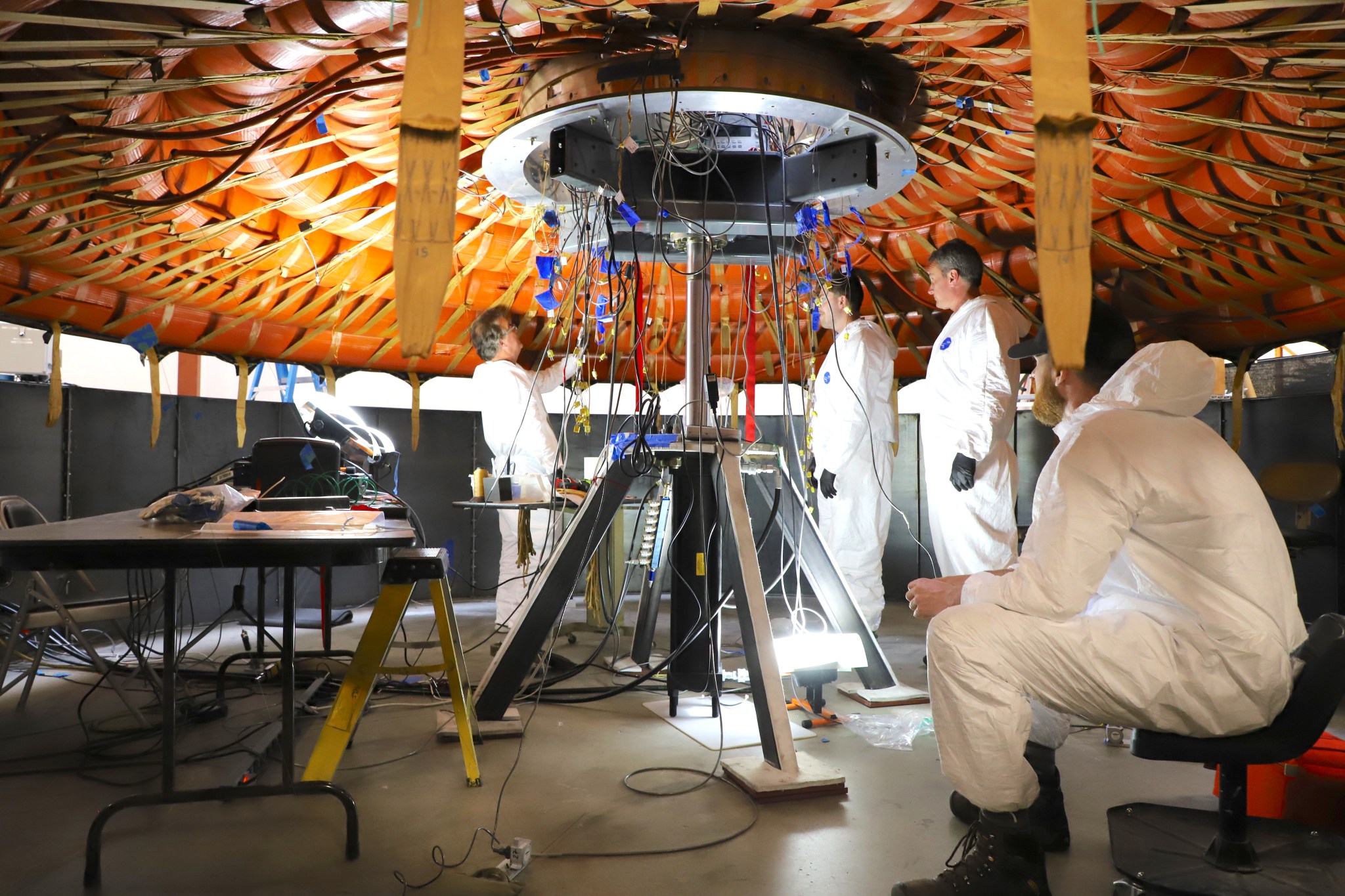
Spacesuits are essentially custom spacecraft for astronauts. NASA’s latest spacesuit is so high-tech, its modular design is engineered to be evolved for use anywhere in space.
The first woman and the next man on the Moon will wear NASA’s next-generation spacesuits called the exploration extravehicular mobility unit or xEMU. The spacesuits prioritize crew safety while also allowing Artemis Generation moonwalkers to make more natural, Earth-like movements and accomplish tasks that weren’t possible during the Apollo missions.
Future upgrades to address the differences on Mars may include technology for life support functionality in the carbon dioxide-rich atmosphere and modified outer garments to keep astronauts warm during the Martian winter and prevent overheating in the summer season.
To reduce the number of items needed to land on the surface, NASA will combine the first Martian home and vehicle into a single rover complete with breathable air.
NASA has conducted extensive rover testing on Earth to inform development of a pressurized mobile home on the Moon. Artemis astronauts who live and work in the future pressurized Moon rover will be able to offer feedback to help refine the rover capabilities for astronauts on Mars. NASA’s robotic rovers will help with the Martian design, too – everything from the best wheels for Mars to how a larger vehicle will navigate the tough terrain.
Much like an RV, the pressurized rover will have everything inside that astronauts need to live and work for weeks. They can drive in comfortable clothing, tens of miles from the spacecraft that will launch them back to space for the return trip to Earth. When they encounter interesting locations, astronauts can put on their high-tech spacesuits to exit the rover and collect samples and conduct science experiments.
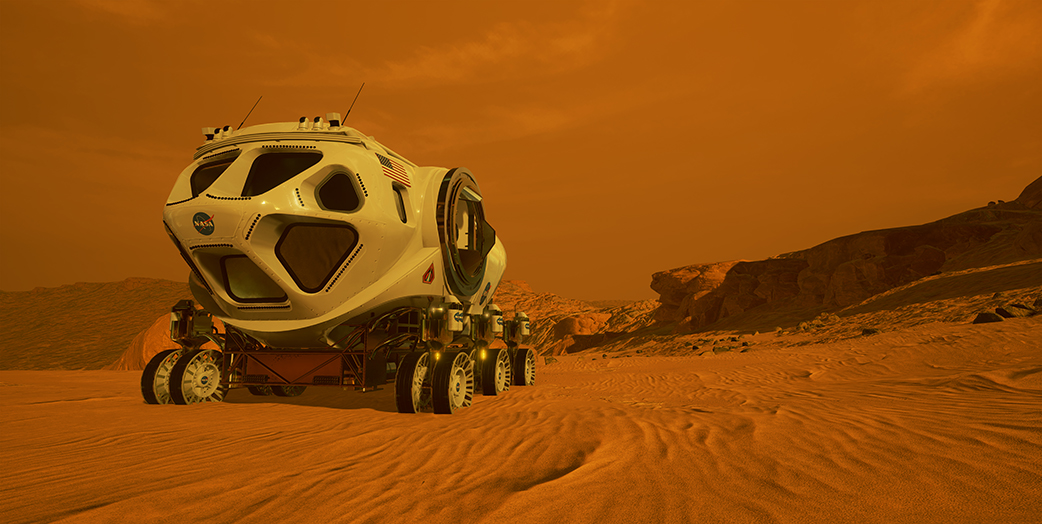
Like we use electricity to charge our devices on Earth, astronauts will need a reliable power supply to explore Mars. The system will need to be lightweight and capable of running regardless of its location or the weather on the Red Planet.
Mars has a day and night cycle like Earth and periodic dust storms that can last for months, making nuclear fission power a more reliable option than solar power. NASA already tested the technology on Earth and demonstrated it is safe, efficient, and plentiful enough to enable long-duration surface missions. NASA plans to demonstrate and use the fission power system on the Moon first, then Mars.
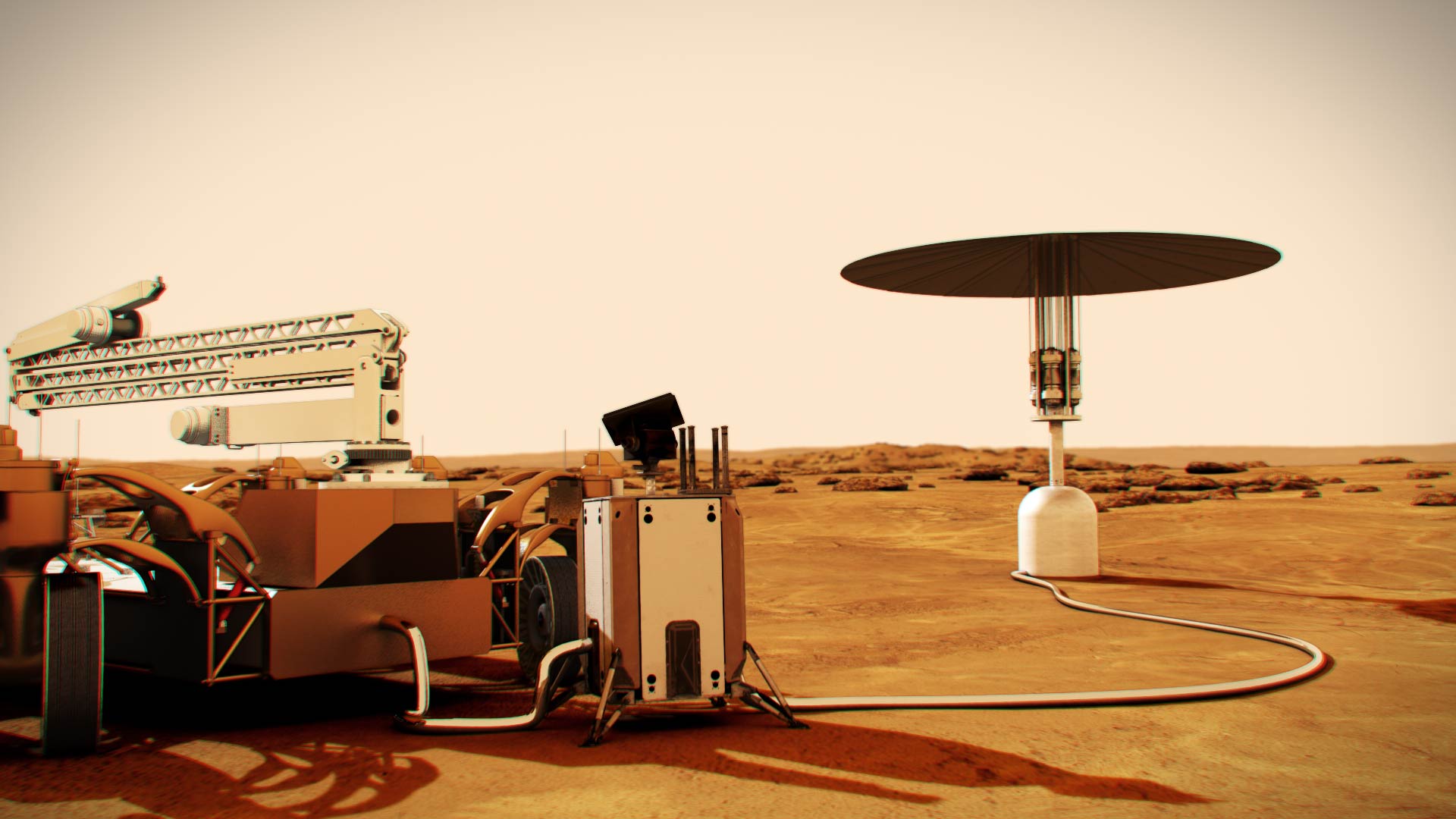
Human missions to Mars may use lasers to stay in touch with Earth. A laser communications system at Mars could send large amounts of real-time information and data, including high-definition images and video feeds.
Sending a map of Mars to Earth might take nine years with current radio systems, but as little as nine weeks with laser communications . The technology would also allow us to communicate with astronauts, to see and hear more of their adventures on the Red Planet. NASA proved laser communications is possible with a demonstration from the Moon in 2013. The agency’s next demo will work through different operational scenarios, perfect the pointing system, and address technology challenges from low-Earth orbit – things like clouds and other communications disruptions. NASA is building small systems to test for human spaceflight, including on the International Space Station and the first crewed Artemis mission. Another laser communications payload will venture to deep space to help inform what it takes to use the same technology millions and millions of miles away from Earth.
To learn more about NASA’s Moon to Mars exploration approach, visit:
https://www.nasa.gov/topics/moon-to-mars
How long does it take to get to Mars?
We explore how long it takes to get to Mars and the factors that affect a journey to the Red Planet.
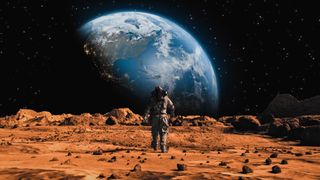
- Distance to Mars
- Traveling at the speed of light
Fastest spacecraft so far
Mars travel time q&a with an expert.
- Travel time calculation problems
- Past mission's travel times
Additional resources
Ever wondered how long does it take to get to Mars?
The answer depends on several factors, ranging from the position of Earth and Mars to the technology that would propel you there. According to NASA , a one-way trip to the Red Planet would take about nine months . If you wanted to make it a round-trip , all in all, it would take about 21 months as you will need to wait about three months on Mars to make sure Earth and Mars are in a suitable location to make the trip back home.
We take a look at how long a trip to the Red Planet would take using available technology and explore some of the factors that would affect your travel time.
Related: Curiosity rover: 15 awe-inspiring photos of Mars (gallery)
How far away is Mars?
To determine how long it will take to reach Mars, we must first know the distance between the two planets.
Mars is the fourth planet from the sun, and the second closest to Earth (Venus is the closest). But the distance between Earth and Mars is constantly changing as they travel around the sun .
In theory, the closest that Earth and Mars would approach each other would be when Mars is at its closest point to the sun (perihelion) and Earth is at its farthest (aphelion). This would put the planets only 33.9 million miles (54.6 million kilometers) apart. However, this has never happened in recorded history. The closest recorded approach of the two planets occurred in 2003 when they were only 34.8 million miles (56 million km) apart.
The two planets are farthest apart when they are both at their farthest from the sun, on opposite sides of the star. At this point, they can be 250 million miles (401 million km) apart.
The average distance between Earth and Mars is 140 million miles (225 million km).
Related: What is the temperature on Mars?
How long would it take to travel to Mars at the speed of light?

Light travels at approximately 186,282 miles per second (299,792 km per second). Therefore, a light shining from the surface of Mars would take the following amount of time to reach Earth (or vice versa):
- Closest possible approach: 182 seconds, or 3.03 minutes
- Closest recorded approach: 187 seconds, or 3.11 minutes
- Farthest approach: 1,342 seconds, or 22.4 minutes
- On average: 751 seconds, or just over 12.5 minutes
The fastest spacecraft is NASA's Parker Solar Probe , as it keeps breaking its own speed records as it moves closer to the sun. On Nov 21, 2021, the Parker Solar Probe reached a top speed of 101 miles (163 kilometers) per second during its 10th close flyby of our star, which translates to a phenomenal 364,621 mph (586,000 kph). According to a NASA statement , when the Parker Solar Probe comes within 4 million miles (6.2 million kilometers) of the solar surface in December 2024, the spacecraft's speed will top 430,000 miles per hour (692,000 kph)!
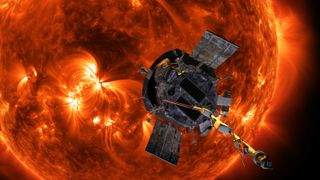
So if you were theoretically able to hitch a ride on the Parker Solar Probe and take it on a detour from its sun-focused mission to travel in a straight line from Earth to Mars, traveling at the speeds the probe reaches during its 10th flyby (101 miles per second), the time it would take you to get to Mars would be:
- Closest possible approach: 93 hours
- Closest recorded approach: 95 hours
- Farthest approach: 686 hours (28.5 days)
- On average: 384 hours (16 days)
We asked Michael Khan, ESA Senior Mission Analyst some frequently asked questions about travel times to Mars.
Michael Khan is a Senior Mission Analyst for the European Space Agency (ESA). His work involves studying the orbital mechanics for journeys to planetary bodies including Mars.
How long does it take to get to Mars & what affects the travel time?
The time it takes to get from one celestial body to another depends largely on the energy that one is willing to expend. Here "energy" refers to the effort put in by the launch vehicle and the sum of the maneuvers of the rocket motors aboard the spacecraft, and the amount of propellant that is used. In space travel, everything boils down to energy. Spaceflight is the clever management of energy.
Some common solutions for transfers to the moon are 1) the Hohmann-like transfer and 2) the Free Return Transfer. The Hohmann Transfer is often referred to as the one that requires the lowest energy, but that is true only if you want the transfer to last only a few days and, in addition, if some constraints on the launch apply. Things get very complicated from there on, so I won't go into details.
Concerning transfers to Mars, these are by necessity interplanetary transfers, i.e., orbits that have the sun as central body. Otherwise, much of what was said above applies: the issue remains the expense of energy. An additional complication lies in the fact that the Mars orbit is quite eccentric and also its orbit plane is inclined with respect to that of the Earth. And of course, Mars requires longer to orbit the sun than the Earth does. All of this is taken into account in a common type of diagram called the "pork chop plot", which essentially tells you the required dates of departure and arrival and the amount of energy required.
The "pork chop plot" shows the trajectory expert that opportunities for Mars transfers arise around every 25-26 months, and that these transfers are subdivided into different classes, one that is a bit faster, with typically around 5-8 months and the other that takes about 7-11 months. There are also transfers that take a lot longer, but I’m not talking about those here. Mostly, but not always, the second, slower one turns out to be more efficient energy-wise. A rule of thumb is that the transfer to Mars takes around as long as the human period of gestation, approximately 9 months. But that really is no more than an approximate value; you still have to do all the math to find out what applies to a specific date.
Why are journey times a lot slower for spacecraft intending to orbit or land on the target body e.g. Mars compared to those that are just going to fly by?
If you want your spacecraft to enter Mars orbit or to land on the surface, you add a lot of constraints to the design problem. For an orbiter, you have to consider the significant amount of propellant required for orbit insertion, while for a lander, you have to design and build a heat shield that can withstand the loads of atmospheric entry. Usually, this will mean that the arrival velocity of Mars cannot exceed a certain boundary. Adding this constraint to the trajectory optimisation problem will limit the range of solutions you obtain to transfers that are Hohmann-like. This usually leads to an increase in transfer duration.
The problems with calculating travel times to Mars
The problem with the previous calculations is that they measure the distance between the two planets as a straight line. Traveling through the farthest passing of Earth and Mars would involve a trip directly through the sun, while spacecraft must of necessity move in orbit around the solar system's star.
Although this isn't a problem for the closest approach, when the planets are on the same side of the sun, another problem exists. The numbers also assume that the two planets remain at a constant distance; that is, when a probe is launched from Earth while the two planets are at the closest approach, Mars would remain the same distance away over the length of time it took the probe to travel.
Related: A brief history of Mars missions
In reality, however, the planets are moving at different rates during their orbits around the sun. Engineers must calculate the ideal orbits for sending a spacecraft from Earth to Mars. Like throwing a dart at a moving target from a moving vehicle, they must calculate where the planet will be when the spacecraft arrives, not where it is when it leaves Earth.
It's also not possible to travel as fast as you can possibly go if your aim is to eventually orbit your target planet. Spacecraft need to arrive slow enough to be able to perform orbit insertion maneuvers and not just zip straight past their intended destination.
The travel time to Mars also depends on the technological developments of propulsion systems.
According to NASA Goddard Space Flight Center's website, the ideal lineup for a launch to Mars would get you to the planet in roughly nine months. The website quotes physics professor Craig C. Patten , of the University of California, San Diego:
"It takes the Earth one year to orbit the sun and it takes Mars about 1.9 years (say 2 years for easy calculation) to orbit the sun. The elliptical orbit which carries you from Earth to Mars is longer than Earth's orbit but shorter than Mars' orbit. Accordingly, we can estimate the time it would take to complete this orbit by averaging the lengths of Earth's orbit and Mars' orbit. Therefore, it would take about one and a half years to complete the elliptical orbit.
"In the nine months it takes to get to Mars, Mars moves a considerable distance around in its orbit, about three-eighths of the way around the sun. You have to plan to make sure that by the time you reach the distance of Mar's orbit, Mars is where you need it to be! Practically, this means that you can only begin your trip when Earth and Mars are properly lined up. This only happens every 26 months. That is, there is only one launch window every 26 months."
The trip could be shortened by burning more fuel — a process not ideal with today's technology, Patten said.
Evolving technology can help to shorten the flight. NASA's Space Launch System (SLS) will be the new workhorse for carrying upcoming missions, and potentially humans, to the red planet. SLS is currently being constructed and tested, with NASA now targeting a launch in March or April 2022 for its Artemis 1 flight, the first flight of its SLS rocket.
Robotic spacecraft could one day make the trip in only three days. Photon propulsion would rely on a powerful laser to accelerate spacecraft to velocities approaching the speed of light. Philip Lubin, a physics professor at the University of California, Santa Barbara, and his team are working on Directed Energy Propulsion for Interstellar Exploration (DEEP-IN). The method could propel a 220-lb. (100 kilograms) robotic spacecraft to Mars in only three days, he said.
"There are recent advances which take this from science fiction to science reality," Lubin said at the 2015 NASA Innovative Advanced Concepts (NIAC) fall symposium . "There's no known reason why we cannot do this."
How long did past missions take to reach Mars?
Here is an infographic detailing how long it took several historical missions to reach the Red Planet (either orbiting or landing on the surface). Their launch dates are included for perspective.
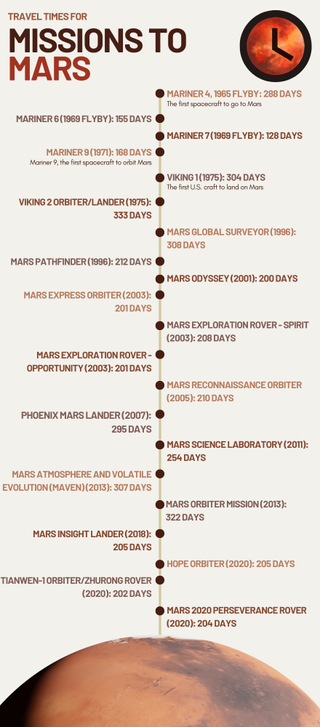
Explore NASA's lunar exploration plans with their Moon to Mars overview . You can read about how to get people from Earth to Mars and safely back again with this informative article on The Conversation . Curious about the human health risks of a mission to the Red Planet? You may find this research paper of particular interest.
Bibliography
- Lubin, Philip. " A roadmap to interstellar flight. " arXiv preprint arXiv:1604.01356 (2016).
- Donahue, Ben B. " Future Missions for the NASA Space Launch System. " AIAA Propulsion and Energy 2021 Forum . 2021.
- Srinivas, Susheela. " Hop, Skip and Jump—The Moon to Mars Mission. " (2019).
Join our Space Forums to keep talking space on the latest missions, night sky and more! And if you have a news tip, correction or comment, let us know at: [email protected].
Get the Space.com Newsletter
Breaking space news, the latest updates on rocket launches, skywatching events and more!

Nola Taylor Tillman is a contributing writer for Space.com. She loves all things space and astronomy-related, and enjoys the opportunity to learn more. She has a Bachelor’s degree in English and Astrophysics from Agnes Scott college and served as an intern at Sky & Telescope magazine. In her free time, she homeschools her four children. Follow her on Twitter at @NolaTRedd
NASA satellite's 'shocking' space junk near-miss was even closer than thought
Rocket Lab gearing up to refly Electron booster for 1st time
Pluto's heart-shaped scar may offer clues to the frozen world's history
Most Popular
- 2 Cosmic fountain is polluting intergalactic space with 50 million suns' worth of material
- 3 India aims to achieve 'debris-free' space missions by 2030
- 4 Scientists use AI to reconstruct energetic flare blasted from Milky Way's supermassive black hole
- 5 Earth Day 2024: Witness our changing planet in 12 incredible satellite images
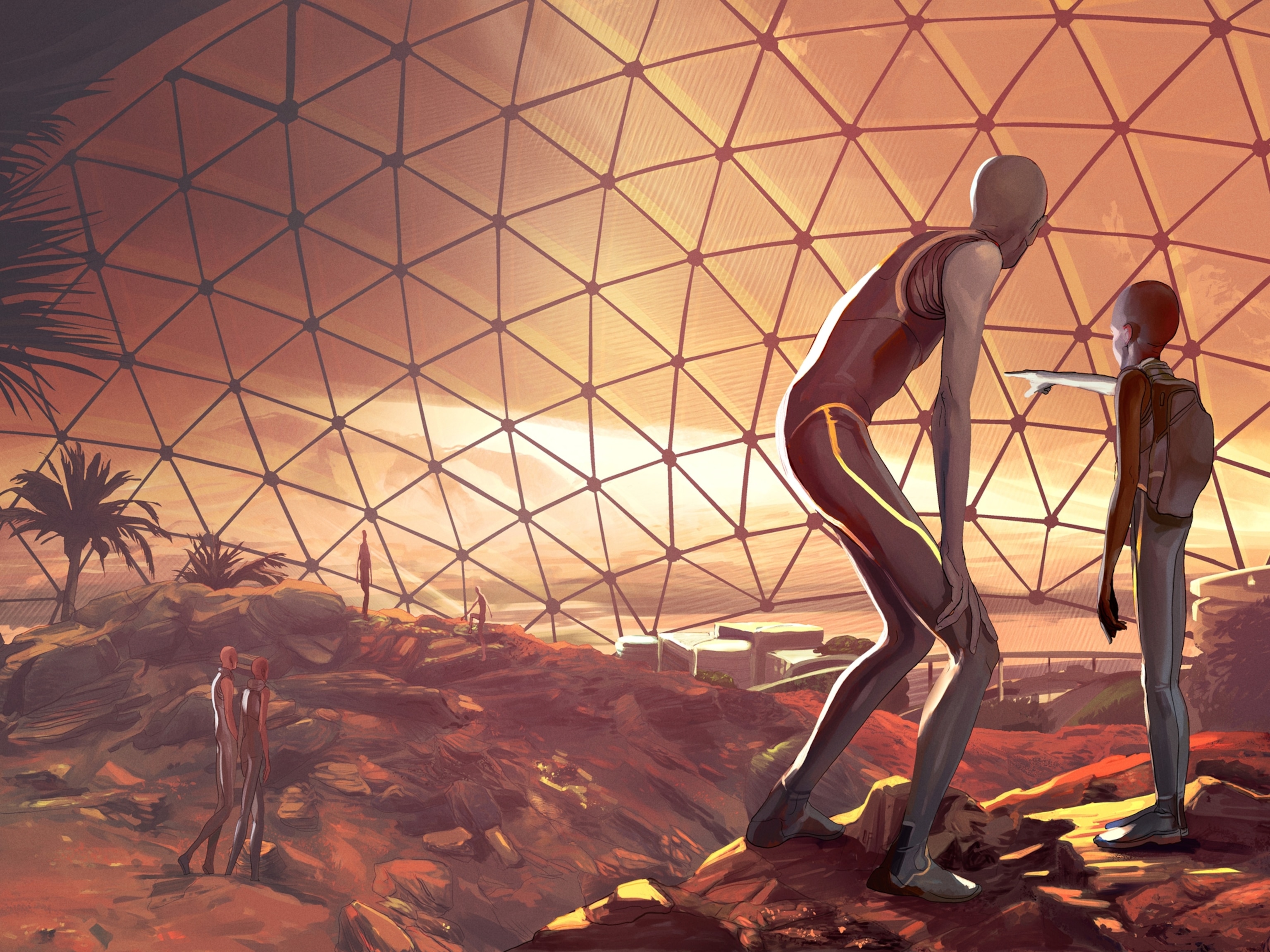
The future of spaceflight—from orbital vacations to humans on Mars
NASA aims to travel to the moon again—and beyond. Here’s a look at the 21st-century race to send humans into space.
Welcome to the 21st-century space race, one that could potentially lead to 10-minute space vacations, orbiting space hotels , and humans on Mars. Now, instead of warring superpowers battling for dominance in orbit, private companies are competing to make space travel easier and more affordable. This year, SpaceX achieved a major milestone— launching humans to the International Space Station (ISS) from the United States —but additional goalposts are on the star-studded horizon.
Private spaceflight
Private spaceflight is not a new concept . In the United States, commercial companies played a role in the aerospace industry right from the start: Since the 1960s, NASA has relied on private contractors to build spacecraft for every major human spaceflight program, starting with Project Mercury and continuing until the present.
Today, NASA’s Commercial Crew Program is expanding on the agency’s relationship with private companies. Through it, NASA is relying on SpaceX and Boeing to build spacecraft capable of carrying humans into orbit. Once those vehicles are built, both companies retain ownership and control of the craft, and NASA can send astronauts into space for a fraction of the cost of a seat on Russia’s Soyuz spacecraft.
SpaceX, which established a new paradigm by developing reusable rockets , has been running regular cargo resupply missions to the International Space Station since 2012. And in May 2020, the company’s Crew Dragon spacecraft carried NASA astronauts Doug Hurley and Bob Behnken to the ISS , becoming the first crewed mission to launch from the United States in nearly a decade. The mission, called Demo-2, is scheduled to return to Earth in August. Boeing is currently developing its Starliner spacecraft and hopes to begin carrying astronauts to the ISS in 2021.
Other companies, such as Blue Origin and Virgin Galactic , are specializing in sub-orbital space tourism. Test launch video from inside the cabin of Blue Origin’s New Shepard shows off breathtaking views of our planet and a relatively calm journey for its first passenger, a test dummy cleverly dubbed “Mannequin Skywalker.” Virgin Galactic is running test flights on its sub-orbital spaceplane , which will offer paying customers roughly six minutes of weightlessness during its journey through Earth’s atmosphere.
With these and other spacecraft in the pipeline, countless dreams of zero-gravity somersaults could soon become a reality—at least for passengers able to pay the hefty sums for the experience.
Early U.S. Spaceflight
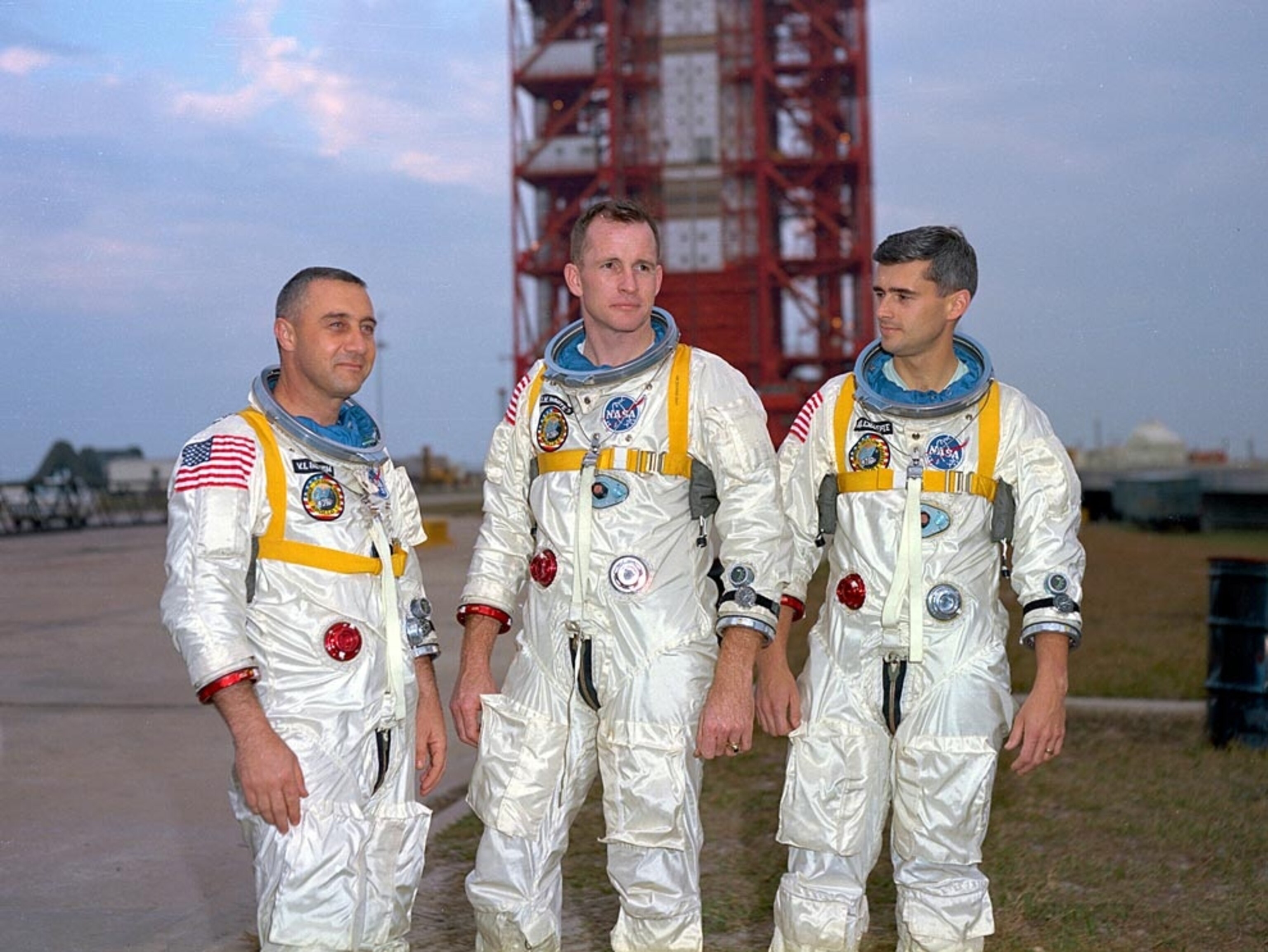
Looking to the moon
Moon missions are essential to the exploration of more distant worlds. After a long hiatus from the lunar neighborhood, NASA is again setting its sights on Earth’s nearest celestial neighbor with an ambitious plan to place a space station in lunar orbit sometime in the next decade. Sooner, though, the agency’s Artemis program , a sister to the Apollo missions of the 1960s and 1970s, is aiming to put the first woman (and the next man) on the lunar surface by 2024.
FREE BONUS ISSUE
Extended lunar stays build the experience and expertise needed for the long-term space missions required to visit other planets. As well, the moon may also be used as a forward base of operations from which humans learn how to replenish essential supplies, such as rocket fuel and oxygen, by creating them from local material.
You May Also Like

In a first, NASA Mars lander feels shockwaves from meteor impacts

SpaceX takes 4 passengers to orbit—a glimpse at private spaceflight’s future

Why go back to the moon? NASA’s Artemis program has even bigger ambitions
Such skills are crucial for the future expansion of human presence into deeper space, which demands more independence from Earth-based resources. And although humans have visited the moon before, the cratered sphere still harbors its own scientific mysteries to be explored—including the presence and extent of water ice near the moon's south pole, which is one of the top target destinations for space exploration .
NASA is also enlisting the private sector to help it reach the moon. It has awarded three contracts to private companies working on developing human-rated lunar landers—including both Blue Origin and SpaceX. But the backbone of the Artemis program relies on a brand new, state-of-the-art spacecraft called Orion .
Archival Photos of Spaceflight

Currently being built and tested, Orion—like Crew Dragon and Starliner—is a space capsule similar to the spacecraft of the Mercury, Gemini, and Apollo programs, as well as Russia’s Soyuz spacecraft. But the Orion capsule is larger and can accommodate a four-person crew. And even though it has a somewhat retro design, the capsule concept is considered to be safer and more reliable than NASA’s space shuttle—a revolutionary vehicle for its time, but one that couldn’t fly beyond Earth’s orbit and suffered catastrophic failures.
Capsules, on the other hand, offer launch-abort capabilities that can protect astronauts in case of a rocket malfunction. And, their weight and design mean they can also travel beyond Earth’s immediate neighborhood, potentially ferrying humans to the moon, Mars, and beyond.
A new era in spaceflight
By moving into orbit with its Commercial Crew Program and partnering with private companies to reach the lunar surface, NASA hopes to change the economics of spaceflight by increasing competition and driving down costs. If space travel truly does become cheaper and more accessible, it’s possible that private citizens will routinely visit space and gaze upon our blue, watery home world—either from space capsules, space stations, or even space hotels like the inflatable habitats Bigelow Aerospace intends to build .
The United States isn’t the only country with its eyes on the sky. Russia regularly launches humans to the International Space Station aboard its Soyuz spacecraft. China is planning a large, multi-module space station capable of housing three taikonauts, and has already launched two orbiting test vehicles—Tiangong-1 and Tiangong-2, both of which safely burned up in the Earth’s atmosphere after several years in space.
Now, more than a dozen countries have the ability to launch rockets into Earth orbit. A half-dozen space agencies have designed spacecraft that shed the shackles of Earth’s gravity and traveled to the moon or Mars. And if all goes well, the United Arab Emirates will join that list in the summer of 2020 when its Hope spacecraft heads to the red planet . While there are no plans yet to send humans to Mars, these missions—and the discoveries that will come out of them—may help pave the way.
Related Topics
- SPACE EXPLORATION
- SCIENCE AND TECHNOLOGY

Second SpaceX megarocket launch ends with another explosion. What happens next?

Why did India land near the moon’s south pole?

In the Arizona desert, NASA prepares for walking on the moon

U.S. returns to the moon as NASA's Odysseus successfully touches down

The moon’s darkest corners are a mystery. This image offers a stunning new glimpse.
- Environment
- Perpetual Planet
- History & Culture
History & Culture
- History Magazine
- Mind, Body, Wonder
- Terms of Use
- Privacy Policy
- Your US State Privacy Rights
- Children's Online Privacy Policy
- Interest-Based Ads
- About Nielsen Measurement
- Do Not Sell or Share My Personal Information
- Nat Geo Home
- Attend a Live Event
- Book a Trip
- Inspire Your Kids
- Shop Nat Geo
- Visit the D.C. Museum
- Learn About Our Impact
- Support Our Mission
- Advertise With Us
- Customer Service
- Renew Subscription
- Manage Your Subscription
- Work at Nat Geo
- Sign Up for Our Newsletters
- Contribute to Protect the Planet
Copyright © 1996-2015 National Geographic Society Copyright © 2015-2024 National Geographic Partners, LLC. All rights reserved

Five mind-blowing facts - New York Central passenger trains
Mind-blowing facts - new york central passenger trains.
We are 50-plus years into the Amtrak era, which began on May 1, 1971. A few Amtrak trains still carry the identity of the conveyances they imitate - California Zephyr, Empire Builder, and Crescent - to mention a few. What lives on today is a contemporary train - traveling a route similar to the original, but not quite - that is a shadow of their forebears. When it comes to American passenger trains, names like the Super Chief, City of New Orleans, or Capitol Limited evoke a hushed reverence and the legend of exceptional service, comfortable accommodations, fine food, and a schedule well maintained.
If these few name trains are the stuff of legend, then the New York Central, its Great Steel Fleet, and trains like the 20th Century Limited are the stuff legends are made of. Many have argued that the 20th Century Limited was the finest passenger train on American rails. Argue how you like and long for the days of yore, but either way come along now for a glimpse behind the legendary standard passenger trains of the New York Central. There is more to the story than meets the eye across all the years. These are five-mind blowing facts about the passenger trains of the New York Central.
No. 1 - The Century by the numbers
The New York Central's top passenger train was the 20th Century Limited . It was an all-Pullman, extra-fare, luxury liner running between New York and Chicago on a 15-hour schedule in 1948. An early-1930 advertisement by the NYC stated that: "The 20th Century Limited long since ceased to be a ‘train.' It is a daily fleet of trains." In the 12 months prior to the ad's appearance, the NYC had dispatched 2,153 trains carrying the 20th Century Limited name. That works out to almost six sections of the train daily. The record day came in January 1929 when seven Century sections traveled eastbound from Chicago to New York carrying 822 passenger.
Each Century section required a crew of nearly 70, which is a ratio of one crew member for every 1.75 passengers. Included among the staff were sleeping car porters, dining car waiters, stewards, cooks, maids, barbers, manicurists, valets, and secretaries.
Equipment-wise, the NYC kept 24 locomotives and 122 identical luxury sleeping cars on standby to meet demand and or mitigate negative situations impacting the Century's schedule. The schedule, by the way, was guaranteed to the point that the NYC refunded each passenger $1 for each hour the train was late. Also, the 122 standby sleepers, as with all cars assigned to the Century, had to be turned so that passenger room windows faced the waters of the Hudson River going into or coming out of New York. The NYC paid attention to the smallest detail so passengers would have the best travel experience.
No. 2 - The Wolverine and My Old School
Grab those stereophonic headphones, it's time for a trip back to 1973 …
I remember the 35 sweet goodbyes
When you put me on The Wolverine up to Annandale
It was still September
When your daddy was quite surprised
To find you with the working girls in the county jail
I was smoking with the boys upstairs when I
Heard about the whole affair, I said oh no
William and Mary won’t do …
Dial the volume down from 10 and let's interpret what you just heard. This is the first verse of the song My Old School from the group Steely Dan's 1973 album Countdown to Ecstasy. Band leaders Donald Fagen and Walter Becker tell the story of getting caught up in a pot bust at their old school - Bard College - in Annandale-on-Hudson, N.Y. The incident happened in May 1969, a time when "long hairs," like Fagen and Becker, were targeted for their behavior - real or imagined.
The Wolverine was a New York Central train running from New York to Chicago, and was popular transportation for Bard students. The train ran an interesting route, ducking into Canada after Buffalo, N.Y., and returning to the U.S. at Detroit, before a final sprint to the Windy City. It carried both sleeper and coach accommodations.
The time visited in My Old School was a time when The Wolverine, like many passenger trains, was in decline. Starting in 1957, the train lost its observation car. By December 1967, The Wolverine was no longer a named train, merely appearing as Nos. 17/8. During the Penn Central period, the train remained numbered only - westbound, Nos. 61/17. Eastbound, No. 14, was truncated at Buffalo, with passengers needing to change trains at 2:30 a.m. in order to reach New York.
Interestingly in all of this, The Wolverine never stopped in Annandale-on-Hudson. The closest NYC station to Bard College was 8 miles away in Rhinecliff, N.Y. Finally, today's Amtrak Wolverine, running between Chicago and Pontiac, Mich., via Detroit, is a direct descendant of the original NYC train … although neither of them would actually get you to my old school.
No. 3 - Would you like butter with that?
The 20th Century Limited epitomized the concept of a passenger train being akin to the finest hotel or steamship, but one that glides along steel rails rather than remaining perched on a foundation or cresting the next wave. During the Century's heyday, its two arch-competitors could be found in the Pennsylvania Railroad's Broadway Limited, and the Baltimore & Ohio Railroad's Capitol Limited , both of which also ran a New York-Chicago route. It has been reported, that all else being equal in the mind of the passenger, the choice of which train to take sometimes came down to the dining car the passenger preferred.
If a passenger liked butter, the 20th Century Limited was the way to go. Beginning with the Century's inauguration in 1902, Dr. William Seward Webb, a Vanderbilt relation and president of the Lake Shore & Michigan Southern Railroad over whose tracks the Century ran west of Buffalo, N.Y., became the official source for the train's butter provision. Webb owned a hobby agricultural venture - Shelburne Farm, located on the shores of Lake Champlain in Vermont. For a hobby farm, the operation was stunning, featuring well-maintained, prized herd of purebred Hereford cattle. From here, Webb produced the luscious creamy butter served aboard the Century.
For each passenger, the Century carried one pound of butter. The butter was served at table in the dining car and also used in the kitchen for cooking. However, whether traveling New York to Chicago or Chicago to New York, a pound of butter was allotted for each passenger. " … the diners of the Century may will have rolled on butter in their journal boxes," commented noted author and photographer Lucius Beebe in his book on the train.
No. 4 – Beer and NYC trains don't mix
New York's Grand Central Terminal stands as an icon in the railroad world. Since opening on Feb. 2, 1913, millions have passed through its spectacular halls, beginning, or ending a long-distance journey or merely as part of a daily commute. The Terminal's construction solved a significant neighborhood problem, by putting the trains underground and converting Park Avenue, running north of the station, into a boulevard befitting the posh uptown neighborhood the area was becoming.
Constructing Grand Central's two levels of track required massive excavations along Park Avenue. From 42nd to 50th street 1.6 million yards of rock were drilled and removed along with 1.2 million cubic yards of earth. More than 200 buildings were razed as the terminal site expanded from 23 to 48 acres.
One of the many construction challenges that arose appeared in the two-block area bounded by Lexington and Park avenues and 50th and 52nd streets. Roughly a third of these two blocks were occupied by two schools and church, another third by businesses and apartments. The last third, and the largest single landholder was the F.&M. Schaefer Brewing Co. The brewery fronted Park Avenue and for many years enjoyed having a street-level siding. With the tracks being moved below street level, the brewery's siding was gone. More disturbing, however, was that the drilling vibrations and the close proximity of the railroad excavations to the brewery threatened underground lagering cellars.
Despite the setbacks and danger, The F.&M. Schaefer Brewing Co. did not protest the planned expansion. On Nov. 22, 1902, according to the New York Times, former city controller Ashbel P. Fitch, representing the brewery, stated, " [F.&M. Schaefer Brewing Co. will] not stand in the way of any great public improvement, and that although they had already suffered by the closing of streets, they were willing to suffer more for the public good."
Ultimately, Schaefer Brewing closed the Manhattan plant, sold the incredibly valuable land, and built a new brewery in Brooklyn.
No. 5 - Late to its own funeral
Into the 1950s, the 20th Century Limited, like other passenger trains was in decline. The allure of faster jetliners and the freedom of the automobile had taken its toll. The last run of the Century was announced for Dec. 2, 1967. The announcement really wasn't a big announcement, but rather a whisper in an attempt to reduce the fanfare around the great train's demise.
Only half full, the Century departed from Grand Central Terminal track 34 at 6 p.m. The fanfare was minimal: a group of railfans gathered on the famous red carpet, taking photos of observation-lounge Wingate Brook, which brought up the rear of the train. Beyond that was the press, taking photos of the railfans. Aboard the train, despite the crew putting on a good face, the equipment was worn, and it was clearly the final trip.
In the dark of night, west of Harbor Creek, Pa., another train had derailed, blocking the Century's path. The train sat still for hours until it was detoured over the Norfolk & Western. In the end, the last run of the 20th Century Limited limped into Chicago around 6:45 p.m. - 9 hours, 50 minutes overdue - late to its own funeral.


Mission Timeline Summary
While every mission's launch timeline is different, most follow a typical set of phases - from launch to science operations.
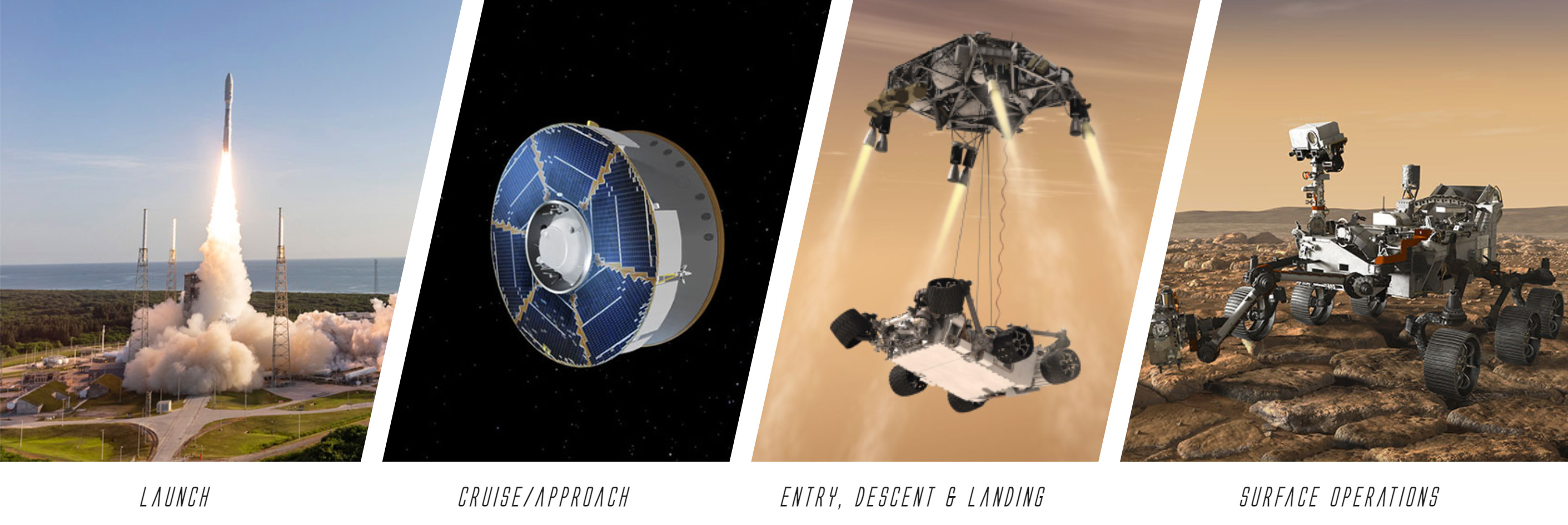
Pre-launch Activities
Preparation for the mission, including pre-project planning, science definition and instrument selection, landing site selection, assembly and testing, and delivery to the launch site.
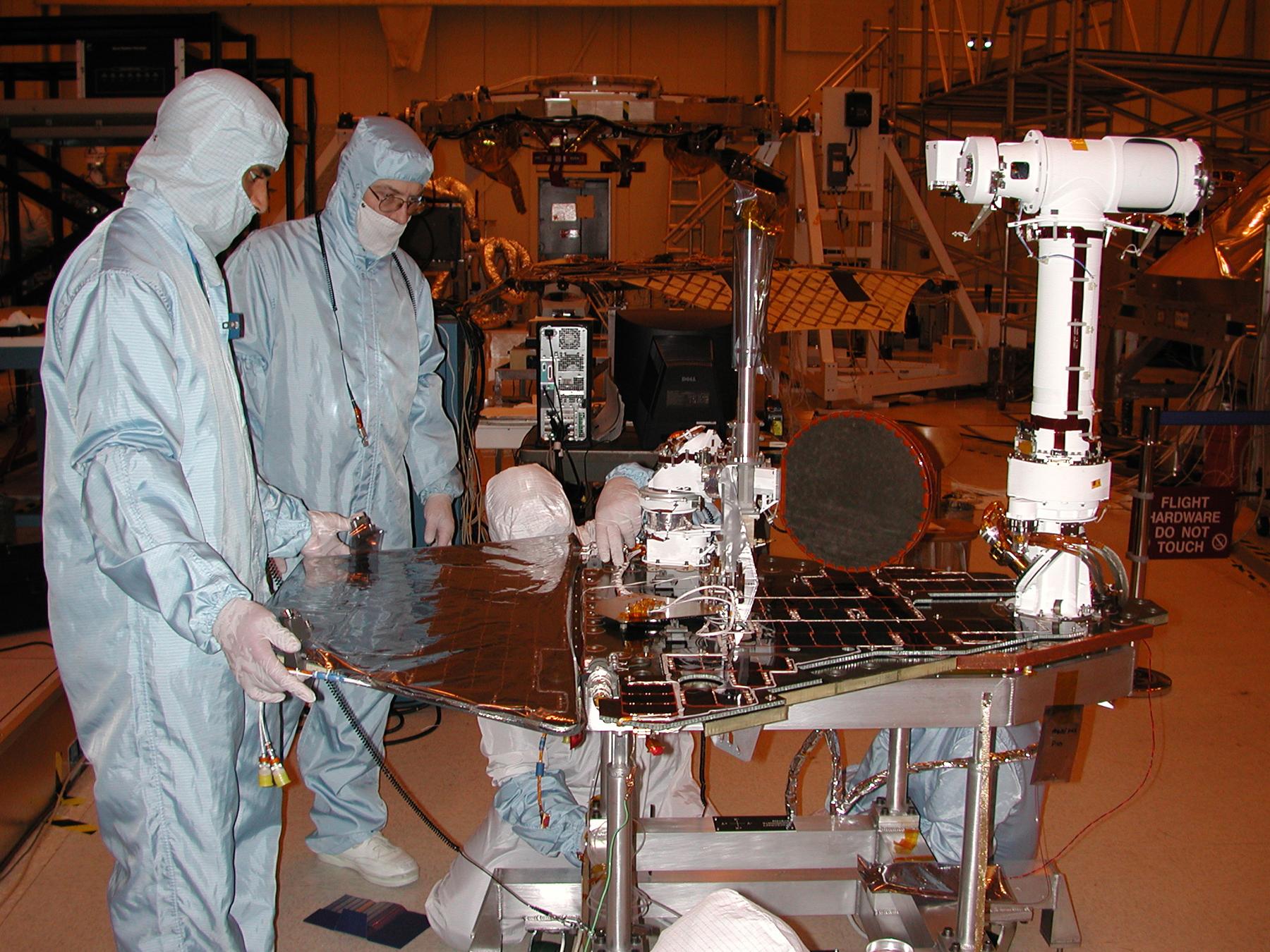
Liftoff from Earth.
Cruise: The Trip to Mars
The interplanetary cruise phase is the period of travel from Earth to Mars and lasts about 200 days. The phase begins after the spacecraft separates from the rocket, soon after launch. Engineers on Earth keep close tabs on the mission during cruise. Major activities include:
- Checking spacecraft health and maintenance
- Monitoring and calibrating the spacecraft and its onboard subsystems and instruments
- Performing attitude correction turns (slight spins to keep the antenna pointed toward Earth for communications, and to keep the solar panels pointed toward the Sun for power)
- Conducting navigation activities, such as trajectory correction maneuvers, to determine and correct the flight path and train navigators before orbit insertion or atmospheric entry. The last three correction maneuvers are scheduled during approach.
- Preparing for entry, descent, and landing (EDL) and surface operations, a process which includes tests of communications, including the communications to be used during EDL.
The mission is timed for launch when Earth and Mars are in good positions relative to each other for landing on Mars. That is, it takes less power to travel to Mars at this time, compared to other times when Earth and Mars are in different positions in their orbits. As Earth and Mars orbit the Sun at different speeds and distances, about once every 26 months they are aligned in a way that allows the most energy-efficient trip to Mars.
Orbiter’s Journey
The approach phase begins two months prior to Mars orbit insertion.
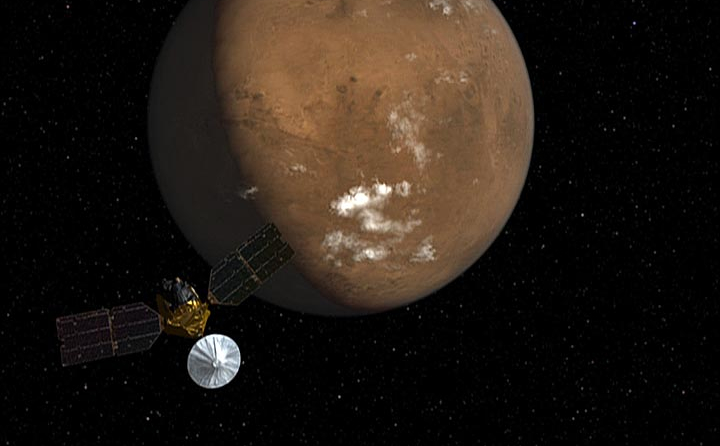
Mars Orbit Insertion
Mars Orbit insertion is the point in the mission when a spacecraft arrives just short of Mars, firing onboard rockets to slow its speed relative to the planet, and it is captured into a long, looping orbit.
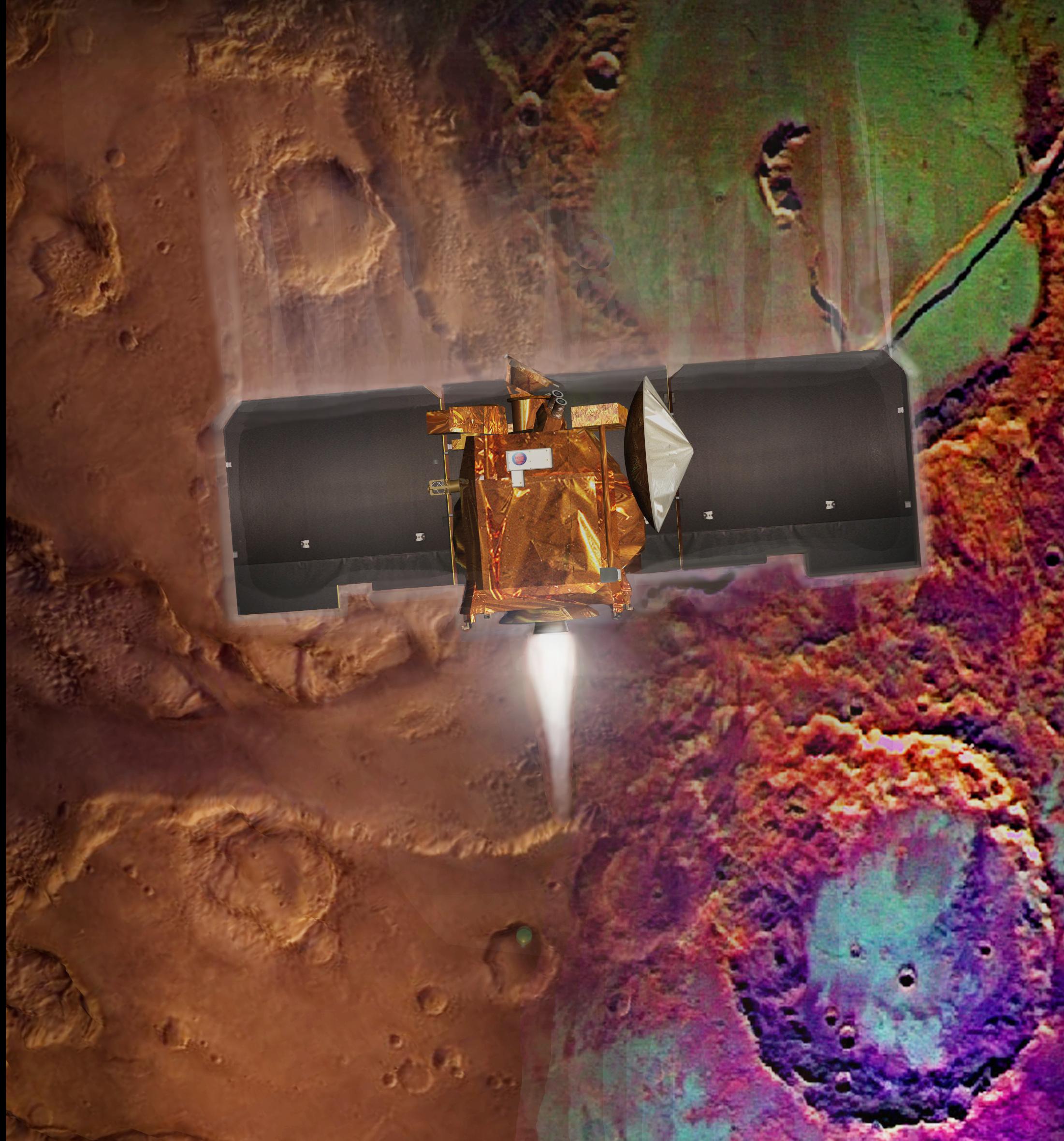
Aerobreaking
Aerobraking is a spaceflight technique wherein an orbiting spacecraft brushes against the top of a planetary atmosphere. The friction of the atmosphere against the surface of the spacecraft slows down and lowers the craft's orbital altitude. The solar panels are used to provide the maximum drag in a symmetrical position that allows some control as the spacecraft passes through the atmosphere.
Instead of using onboard jets and propellant to adjust a spacecraft's orbit, aerobraking uses the atmosphere as both a brake and a steering wheel. The technique, however, shares more elements with sailing than with driving: successful aerobraking depends upon precise navigation, knowledge of weather, and a solid understanding of the forces the craft can withstand.
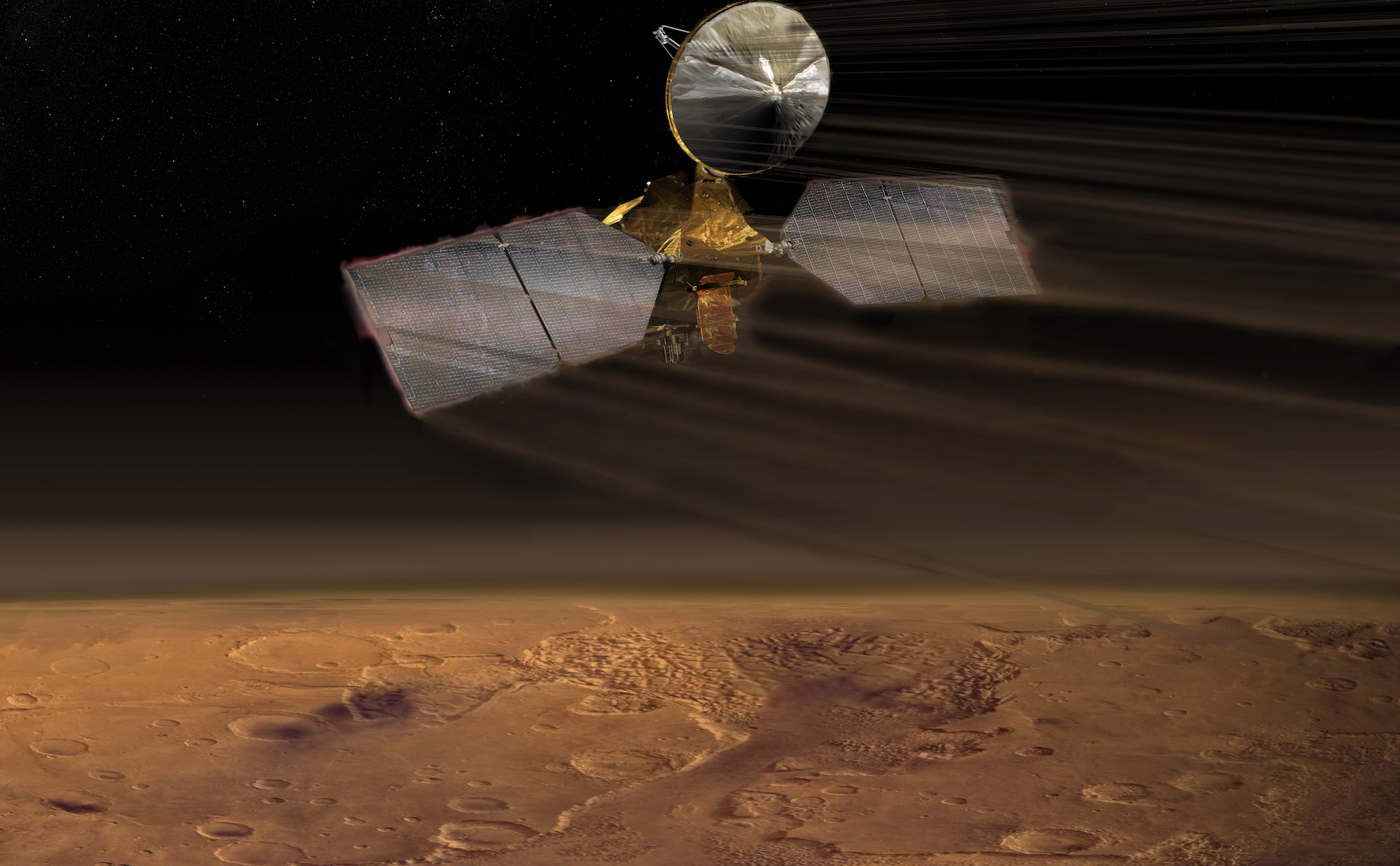
Science Operations
Orbiters begin their primary science phase when they enter science orbit and their instruments and other systems are calibrated and ready to collect science data.
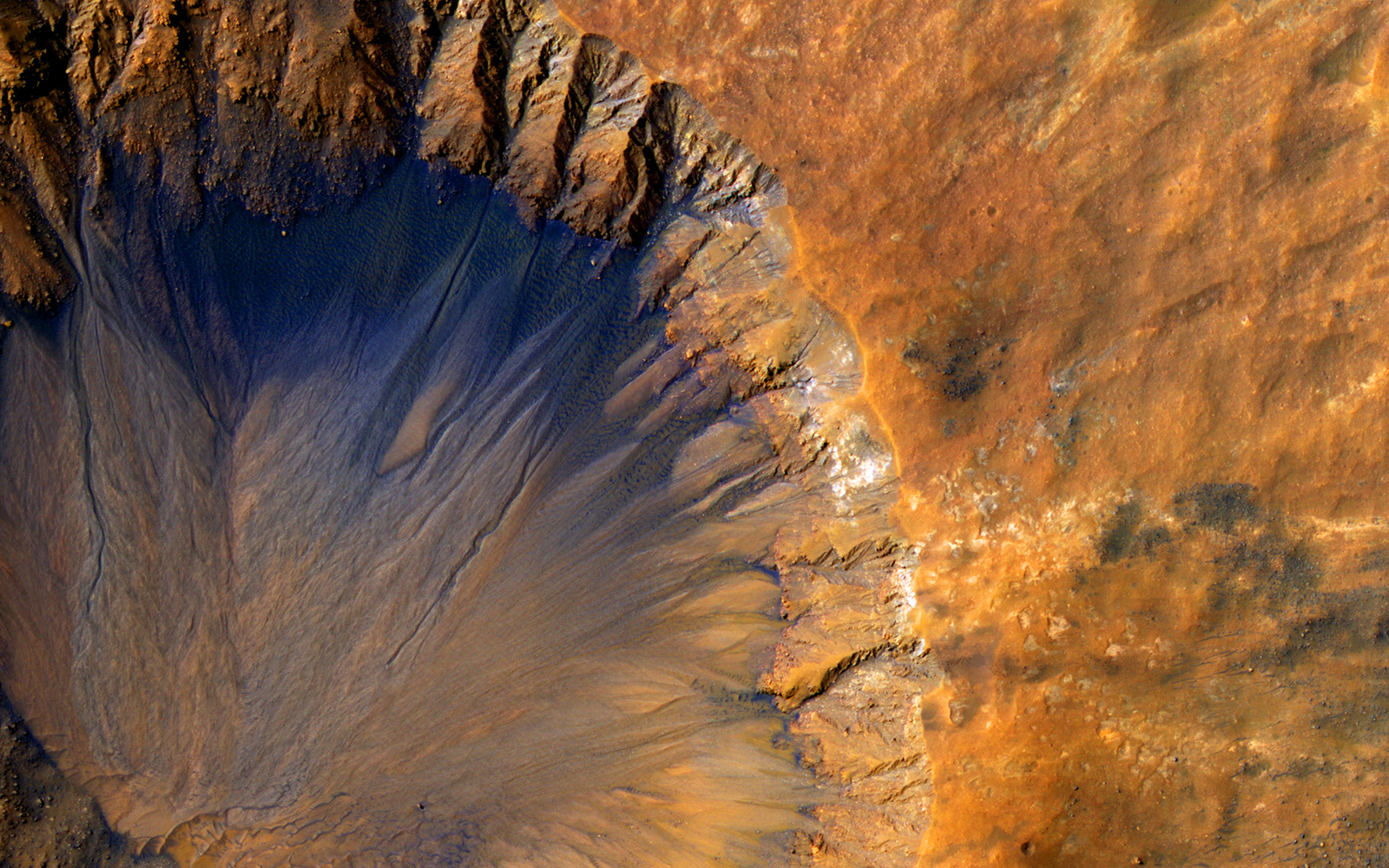
Communications Relay
At the end of their primary missions, orbiters support the Mars Exploration Program by providing communications support to future Mars missions during approach, navigation, and relay. The relay orbit is similar to that of the primary science orbit. In general, this orbit allows for relay access to any point on Mars. Most locations on Mars will have contact opportunities once or twice per day.
Relay activities and other activities in support of newly arrived missions have highest priority during the relay phase. Electra, the navigation and telecommunications relay payload, can provide UHF coverage to Mars landers and rovers on the surface using its nadir-pointed (pointed straight down at the surface) antenna.
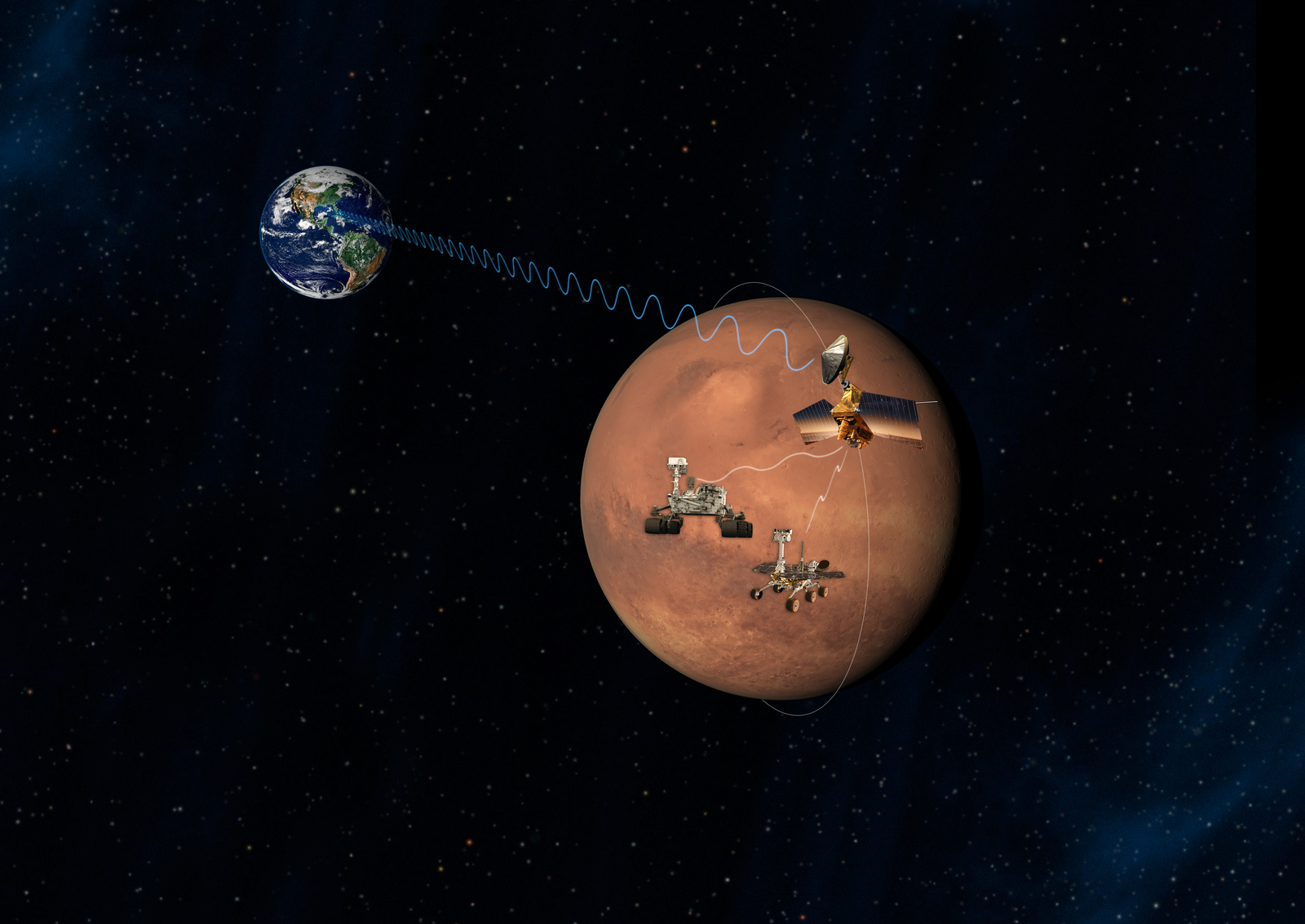
Rover/Lander’s Journey
To ensure a successful entry, descent, and landing, engineers began intensive preparations during the approach phase, about 45 days before the spacecraft entered the Martian atmosphere. It lasted until the spacecraft entered the Martian atmosphere, which extends 2,113 miles (3,522.2 kilometers) as measured from the center of the Red Planet.
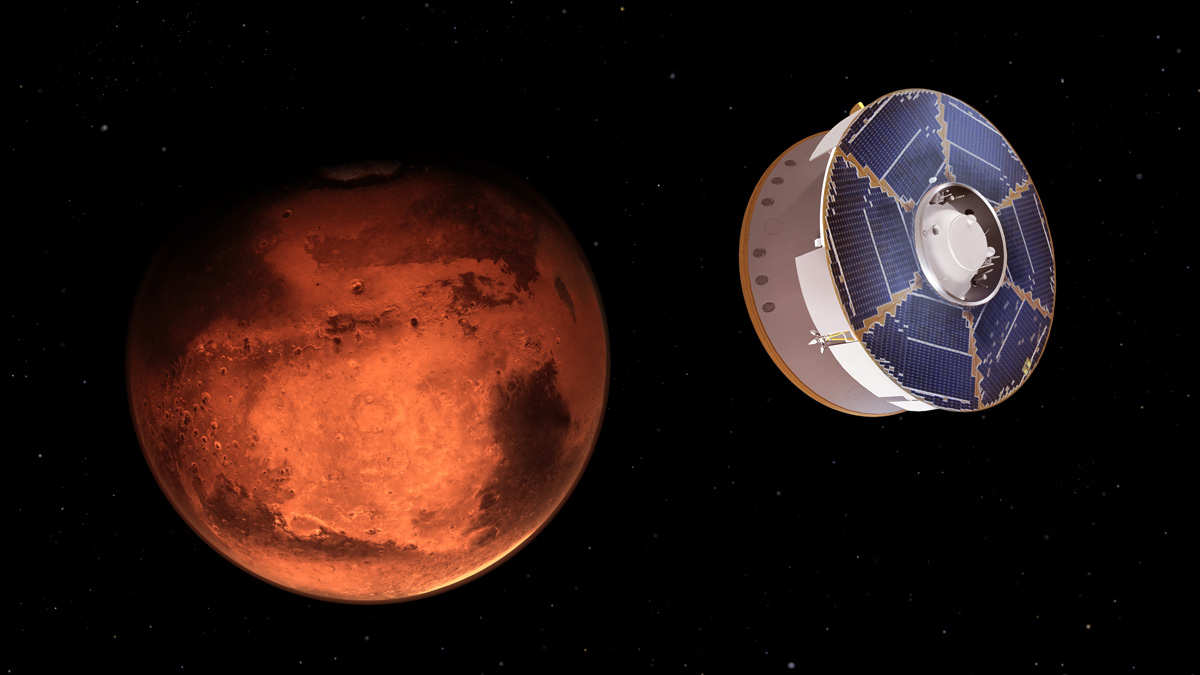
Entry, Descent, and Landing
Entry, Descent, and Landing – often referred to as "EDL" – is the shortest and most intense phase of a rover mission. It begins when the spacecraft reaches the top of the Martian atmosphere, traveling at high speeds. It ends about seven minutes later, with the rover stationary on the Martian surface. To safely go from those speeds down to zero in that short amount of time, while hitting a narrow target on the surface, requires “slamming on the brakes” in a very careful, creative, and challenging way.
Instrument Checks and First Drive
After landing, when engineers first conduct tests to ensure the rover is in a "safe state."
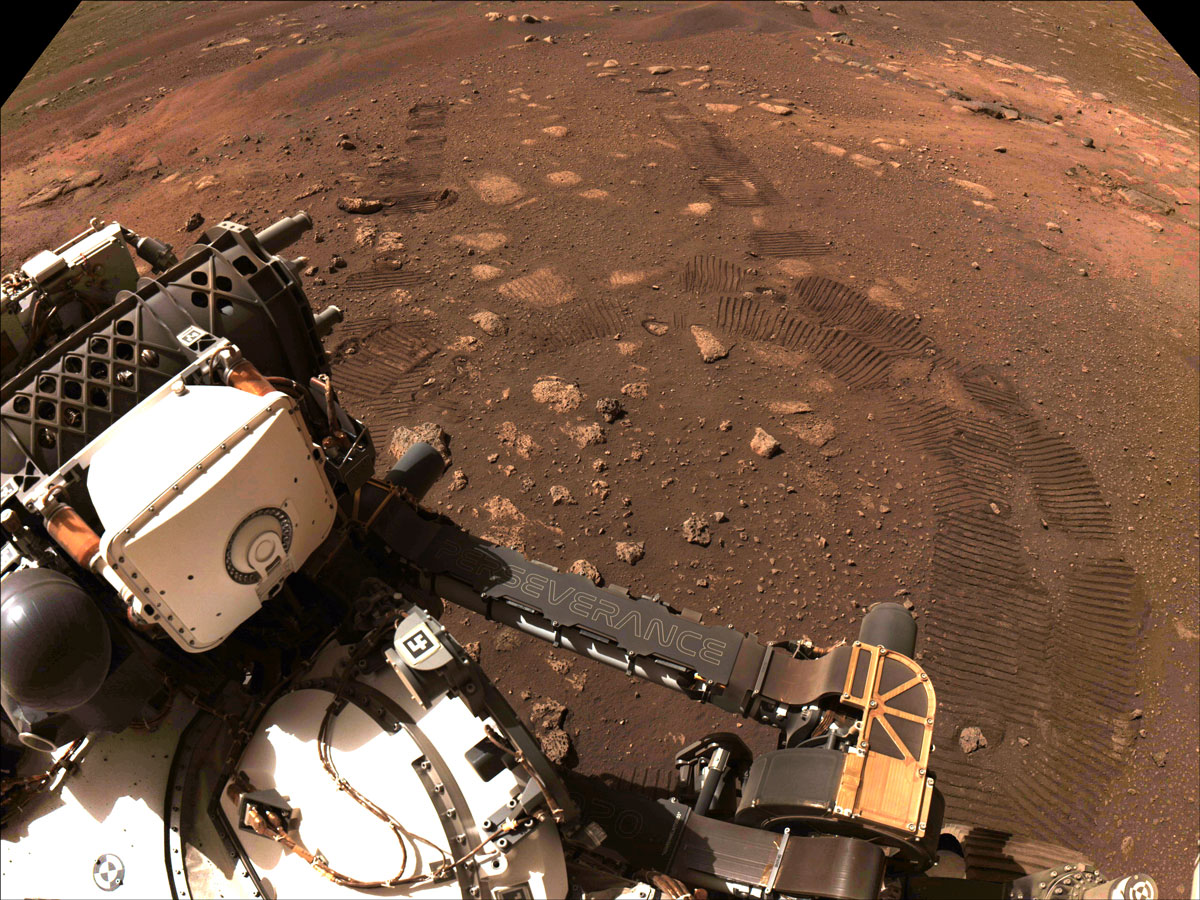
Surface Operations
For spacecraft that land on the surface of Mars, the surface operations phase is the time when spacecraft learn about Mars through day-to-day scientific activities of the rover.
Discover More Topics From NASA
Solar System Exploration

Asteroids, Comets & Meteors

Numbers, Facts and Trends Shaping Your World
Read our research on:
Full Topic List
Regions & Countries
- Publications
- Our Methods
- Short Reads
- Tools & Resources
Read Our Research On:
5 facts about presidential travel abroad
American presidents and other world leaders frequently travel internationally, most commonly for conferences and bilateral meetings. This face-to-face diplomacy can offer insights into political priorities, partnerships and tensions, as well as key international issues.
The COVID-19 pandemic disrupted international travel in 2020 and 2021, but diplomatic travel picked up significantly in 2022. Here are five facts about presidential travel abroad:
Pew Research Center conducted this analysis to examine the international travel history of recent U.S. presidents and other heads of government through Jan. 20, 2023.
Dates and destinations of U.S. presidential travel prior to 2021 are from the U.S. Department of State’s Office of the Historian, which has recorded international presidential travel since 1901. Travel data for 2021 and 2022 was compiled from White House press briefings. Information on visits to Ukraine by other world leaders were independently verified through official government websites.
Only trips where the head of government met face-to-face with another head of government are included. For example, Biden’s trip to the UK for Queen Elizabeth II’s funeral is excluded as Biden did not hold any diplomatic meetings with the British prime minister or other world leaders. Visiting leaders were only counted if they were the head of government at the time of their visit. Depending on the country’s political system, “head of government” could mean president or prime minister, but not both. Heads of state, monarchs and interim leaders are excluded from the visiting leaders count.
U.S. President Joe Biden has traveled internationally less frequently than his last two predecessors did. Biden traveled to 17 places outside the United States in his first two years in office, visiting some more than once. He made six international trips in 2021, all of them to Europe. In 2022, he made 12 trips, including to Europe, the Asia-Pacific region and the Middle East. And in early 2023, Biden traveled to Mexico for the North American Leaders’ Summit.

All told, Biden’s international visit count trails those of former Presidents Donald Trump, who made 23 international trips to 20 places during his first two years in office, and Barack Obama, who made 32 trips to 24 places in the first two years of his presidency.
Biden’s first presidential trip abroad was to the United Kingdom, while Trump’s was to Saudi Arabia and Obama’s was to Canada. A president’s first trip is often used to signal the importance of a strategic alliance. On his trip to the UK in June 2021, Biden reaffirmed the U.S.-UK partnership and committed to close cooperation throughout his presidency. Typically, U.S. presidents visit a close ally on their inaugural trip: Canada was the first international destination for both Obama and Bill Clinton, while Mexico was the first destination for George W. Bush.
U.S. presidents have visited the UK the most in the past decade – a total of eight times. American presidents have worked closely with their British counterparts over the past decade, cooperating on issues from defense and counterterrorism to climate policy . Travel to the UK has largely centered around conferences and summits, but in 2019, Trump made a ceremonial state visit to the UK .

In the past decade of presidential travel, Belgium (home to NATO headquarters ), France, Germany and Japan are the second-most visited destinations, at six times each.
So far, Biden has made the most trips to the UK and Belgium – two each. (Biden’s additional visit to the UK to attend the funeral of Queen Elizabeth II is not included in this count, since he did not hold any diplomatic appointments.) Just as these two European allies stand out in Biden’s presidential travel thus far, France stands out in Trump’s administration and Germany stands out in Obama’s – they visited those respective countries four times while in office.
Biden is among 38 heads of government who have visited Ukraine since the beginning of the war there. Biden traveled to Kyiv as part of a surprise trip in February, days before the first anniversary of Russia’s invasion .
While many heads of government visiting Ukraine have come from neighboring countries or countries in Europe (such as Poland’s prime minister, who has visited five times since the beginning of the war) that is not always the case. For example, Guatemala’s President Alejandro Giammattei and Guinea-Bissau’s President Umaro Sissoco Embaló traveled to Ukraine in July 2022 and October 2022, respectively.
Biden hosted 28 heads of government at the White House as of the end of 2022. Foreign leaders come to the U.S. for events including conferences, summits and bilateral meetings. Among those to visit the White House in 2021 and 2022 were then-Prime Minister Magdalena Andersson of Sweden, who met with Biden to submit her country’s application for NATO membership ; Ukrainian President Volodymyr Zelenskyy, who traveled to the White House on his first known wartime trip abroad ; and French President Emmanuel Macron, whose trip marked the first state visit of Biden’s presidency . In fact, the president of France has been the first leader to make a state visit to the U.S. for the past three presidential terms, with Macron visiting Trump in April 2018 and his predecessor, François Hollande, visiting Obama in February 2014. In April 2023, Biden hosted the second state visit of his administration , meeting with South Korean President Yoon Suk Yeol.
- International Affairs

Sarah Austin is a research assistant focusing on global attitudes research at Pew Research Center
A growing share of Americans have little or no confidence in Netanyahu
Fewer americans view the united nations favorably than in 2023, what are americans’ top foreign policy priorities, rising numbers of americans say jews and muslims face a lot of discrimination, younger americans stand out in their views of the israel-hamas war, most popular.
1615 L St. NW, Suite 800 Washington, DC 20036 USA (+1) 202-419-4300 | Main (+1) 202-857-8562 | Fax (+1) 202-419-4372 | Media Inquiries
Research Topics
- Age & Generations
- Coronavirus (COVID-19)
- Economy & Work
- Family & Relationships
- Gender & LGBTQ
- Immigration & Migration
- Internet & Technology
- Methodological Research
- News Habits & Media
- Non-U.S. Governments
- Other Topics
- Politics & Policy
- Race & Ethnicity
- Email Newsletters
ABOUT PEW RESEARCH CENTER Pew Research Center is a nonpartisan fact tank that informs the public about the issues, attitudes and trends shaping the world. It conducts public opinion polling, demographic research, media content analysis and other empirical social science research. Pew Research Center does not take policy positions. It is a subsidiary of The Pew Charitable Trusts .
Copyright 2024 Pew Research Center
Terms & Conditions
Privacy Policy
Cookie Settings
Reprints, Permissions & Use Policy

IMAGES
VIDEO
COMMENTS
Mars Facts. Mars - the fourth planet from the Sun - is a dusty, cold, desert world with a very thin atmosphere. ... From this distance, it takes sunlight 13 minutes to travel from the Sun to Mars. Orbit and Rotation. As Mars orbits the Sun, it completes one rotation every 24.6 hours, which is very similar to one day on Earth (23.9 hours). ...
One day on Mars lasts about 37 minutes longer than an Earth day. A year on Mars is almost twice as long as a year on Earth. Gravity on Mars is about one-third of the gravity on Earth. If you weigh 100 pounds on Earth, you would weigh 38 pounds on Mars. Mars has two moons: Phobos and Deimos.
From this distance, it takes sunlight 13 minutes to travel from the Sun to Mars. Orbit and Rotation. Orbit and Rotation. As Mars orbits the Sun, it completes one rotation every 24.6 hours, which is very similar to one day on Earth (23.9 hours). Martian days are called sols - short for "solar day." A year on Mars lasts 669.6 sols, which is the ...
Like the Moon, Mars is a rich destination for scientific discovery and a driver of technologies that will enable humans to travel and explore far from Earth. Mars remains our horizon goal for human exploration because it is one of the only other places we know in the solar system where life may have existed.
Overview. Mars is the fourth planet from the Sun - a dusty, cold, desert world with a very thin atmosphere. Mars is also a dynamic planet with seasons, polar ice caps, canyons, extinct volcanoes, and evidence that it was even more active in the past. Mars is one of the most explored bodies in our solar system, and it's the only planet where ...
Once every 26 months, Earth and Mars are aligned in a way that minimizes travel times and expense, enabling spacecraft to make the interplanetary journey in roughly half a year. Earth's space ...
Meet Ingenuity Key Facts Launch July 30, 2020, Cape Canaveral Air Force Station, Florida Landed Feb. 18, 2021, Jezero Crater, Mars Length of mission Technology demonstration completed; transitioned to new operations demo phase. Mission completed on Jan. 25, 2024. Tech Specs Mass 3.97 pounds (1.8 kilograms) Weight 4 pounds on Earth (1.81 kilograms on Mars); […]
Oct 08, 2015. RELEASE 15-206. NASA is leading our nation and the world on a journey to Mars, and Thursday the agency released a detailed outline of that plan in its report, "NASA's Journey to Mars: Pioneering Next Steps in Space Exploration.". "NASA is closer to sending American astronauts to Mars than at any point in our history ...
The car-size Perseverance rover, the centerpiece of NASA's $2.7 billion Mars 2020 mission, will hunt for signs of ancient life, collect and cache samples for future return to Earth and help ...
3) Mars is the second smallest planet in the solar system after Mercury. With a diameter (distance through the middle) of 6,791 kilometres, it's roughly half the size of Earth. 4) It can get pretty cold on Mars -- much colder than our own planet, since it's further away from the sun. At the equator, temperatures can reach 20°C, but at ...
Mars is a cold desert world. The average temperature on Mars is minus 85 degrees Fahrenheit - way below freezing. It is half the size of Earth. Mars is sometimes called the Red Planet. It's red because of rusty iron in the ground. Like Earth, Mars has seasons, polar ice caps, volcanoes, canyons, and weather. It has a very thin atmosphere made ...
inclination of equator to orbit. 25.2°. mean surface temperature. 210 K (−82 °F, −63 °C) typical surface pressure. 0.006 bar. number of known moons. 2. In recent times Mars has intrigued people for more-substantial reasons than its baleful appearance.
Mars is the fourth planet from the Sun.The surface of Mars is orange-red because it is covered in iron(III) oxide dust, giving it the nickname "the Red Planet". Mars is among the brightest objects in Earth's sky and its high-contrast albedo features have made it a common subject for telescope viewing. It is classified as a terrestrial planet and is the second smallest of the Solar System's ...
Fun facts about Mars. Mars can boast the largest volcano in the entire Solar System - Olympus Mons. With a height of 21 km, it stands about 2.5 times taller than Mount Everest. Mars' larger moon, Phobos, gradually gets closer to the planet at a rate of about 2 cm per year.
1969: Mars 1969B, Launch vehicle failure. 1971: Kosmos 419, Achieved Earth orbit only. 1971: Mars 2 Orbiter/Lander Orbiter, arrived, but no useful data / Lander destroyed. 1973: Mars 4, Missed Mars altogether. 1973: Mars 7 Lander, Missed Mars altogether. 1988: Phobos 1 Orbiter, Lost en route to Mars.
LANDING ON MARS. Starship will enter Mars' atmosphere at 7.5 kilometers per second and decelerate aerodynamically. The vehicle's heat shield is designed to withstand multiple entries, but given that the vehicle is coming into Mars' atmosphere so hot, we still expect to see some ablation of the heat shield (similar to wear and tear on a brake pad).
6. Laser communications to send more information home. Human missions to Mars may use lasers to stay in touch with Earth. A laser communications system at Mars could send large amounts of real-time information and data, including high-definition images and video feeds.
Therefore, a light shining from the surface of Mars would take the following amount of time to reach Earth (or vice versa): Closest possible approach: 182 seconds, or 3.03 minutes. Closest ...
Welcome to the 21st-century space race, one that could potentially lead to 10-minute space vacations, orbiting space hotels, and humans on Mars. Now, instead of warring superpowers battling for ...
Science. The Mars 2020 Perseverance Rover searches for signs of ancient microbial life, to advance NASA's quest to explore the past habitability of Mars. The rover is collecting core samples of Martian rock and soil (broken rock and soil), for potential pickup by a future mission that would bring them to Earth for detailed study.
Others took evening walks in the city and shared the bright orange scenes on social media. Greek Meteorologist Kostas Lagouvardos posted on Facebook that Athens looked like "a colony of Mars."
Mind-blowing facts — New York Central passenger trains We are 50-plus years into the Amtrak era, which began on May 1, 1971. A few Amtrak trains still carry the identity of the conveyances they ...
In travel news this week: the world's best and busiest airports, the European capital banning new hotels, the Hawaiian attraction being removed due to bad tourist behavior, plus the real-life ...
India is one of the world's top spacefaring nations. It is the first Asian country to reach Mars orbit, and the fourth on the planet to take a spacecraft to the moon, landing closer to the south ...
Pre-launch Activities Preparation for the mission, including pre-project planning, science definition and instrument selection, landing site selection, assembly and testing, and delivery to the launch site. Launch Liftoff from Earth. Cruise: The Trip to Mars The interplanetary cruise phase is the period of travel from Earth to Mars and lasts about 200 days.
Dates and destinations of U.S. presidential travel prior to 2021 are from the U.S. Department of State's Office of the Historian, which has recorded international presidential travel since 1901. Travel data for 2021 and 2022 was compiled from White House press briefings.